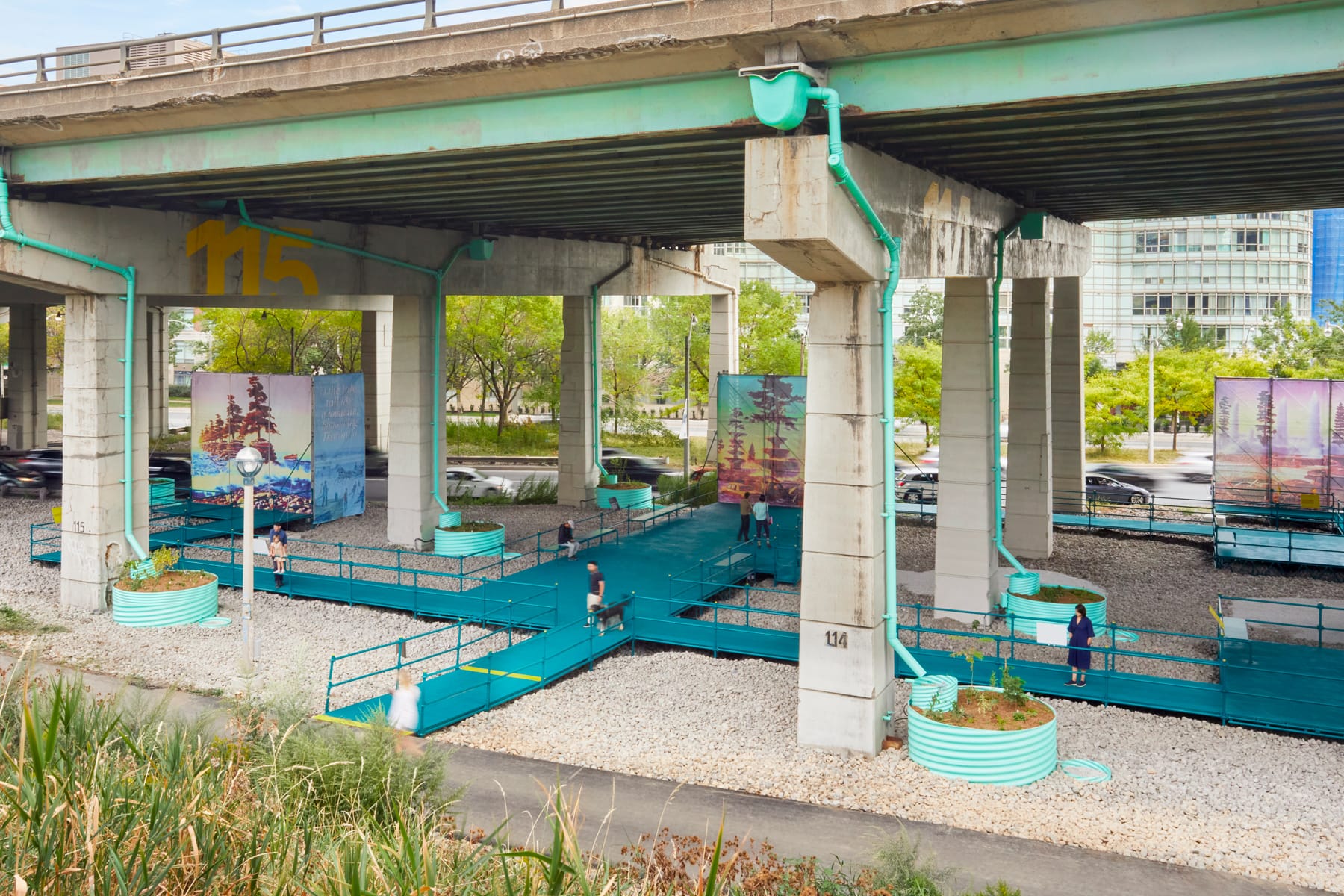
staging grounds
show text
Toronto, Canada
2023
Client: The Bentway
Team: Tei Carpenter, Tanya Maneeintr, Jake Rosenwald
Collaborators: Brother Nature, Buro Happold, Neil Donnelly Studio, SHEEEP
Studio
Photography: © Samuel Engelking (day) and Mila Bright Zlatanovic (night)
Staging Grounds creates a dynamic 20,000sf public space that offers the city of Toronto a new type of public
infrastructure that is a space for active learning, an urban stage, and a site for environmental
regeneration. Bringing attention to an otherwise vacant space underneath the Gardiner Expressway, Staging
Grounds is a multidimensional infrastructure that is a living laboratory for urban ecology, with
experimental gardens that use rainwater run-off from the highway above to support the growth of native plant
species, while passive water filtration and retention help to reduce the risk of local flooding. The design
introduces a network of ramps and elevated walkways that allow visitors to travel into the space by using a
customized scaffolding system. Winner of a Royal Architectural Institute of Canada (RAIC) National Urban
Design Award for Urban Fragments.

staging grounds
show text
Toronto, Canada
2023
Client: The Bentway
Team: Tei Carpenter, Tanya Maneeintr, Jake Rosenwald
Collaborators: Brother Nature, Buro Happold, Neil Donnelly Studio, SHEEEP
Studio
Photography: © Samuel Engelking (day) and Mila Bright Zlatanovic (night)
Staging Grounds creates a dynamic 20,000sf public space that offers the city of Toronto a new type of public
infrastructure that is a space for active learning, an urban stage, and a site for environmental
regeneration. Bringing attention to an otherwise vacant space underneath the Gardiner Expressway, Staging
Grounds is a multidimensional infrastructure that is a living laboratory for urban ecology, with
experimental gardens that use rainwater run-off from the highway above to support the growth of native plant
species, while passive water filtration and retention help to reduce the risk of local flooding. The design
introduces a network of ramps and elevated walkways that allow visitors to travel into the space by using a
customized scaffolding system. Winner of a Royal Architectural Institute of Canada (RAIC) National Urban
Design Award for Urban Fragments.
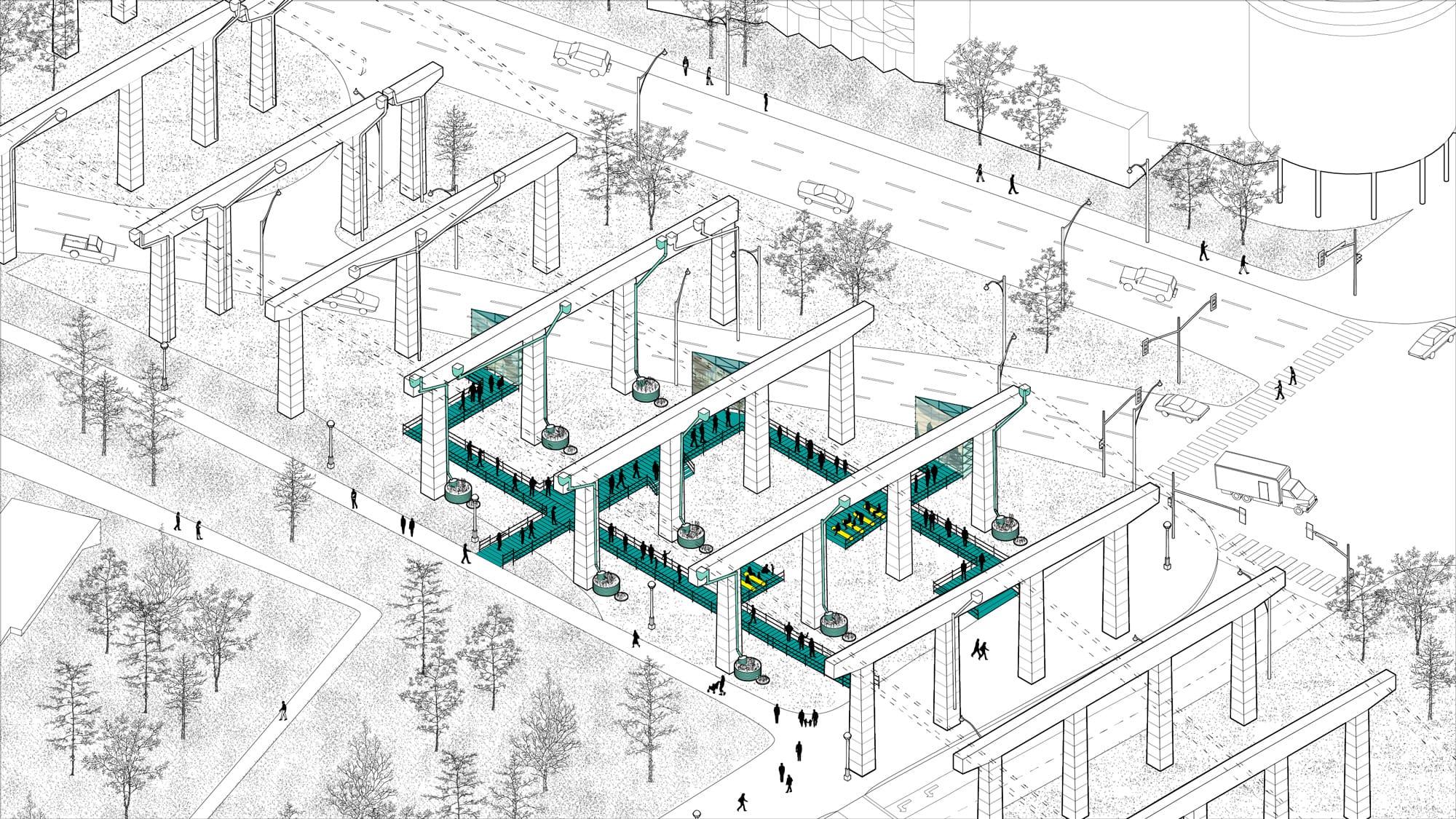
staging grounds
show text
Toronto, Canada
2023
Client: The Bentway
Team: Tei Carpenter, Tanya Maneeintr, Jake Rosenwald
Collaborators: Brother Nature, Buro Happold, Neil Donnelly Studio, SHEEEP
Studio
Photography: © Samuel Engelking (day) and Mila Bright Zlatanovic (night)
Staging Grounds creates a dynamic 20,000sf public space that offers the city of Toronto a new type of public
infrastructure that is a space for active learning, an urban stage, and a site for environmental
regeneration. Bringing attention to an otherwise vacant space underneath the Gardiner Expressway, Staging
Grounds is a multidimensional infrastructure that is a living laboratory for urban ecology, with
experimental gardens that use rainwater run-off from the highway above to support the growth of native plant
species, while passive water filtration and retention help to reduce the risk of local flooding. The design
introduces a network of ramps and elevated walkways that allow visitors to travel into the space by using a
customized scaffolding system. Winner of a Royal Architectural Institute of Canada (RAIC) National Urban
Design Award for Urban Fragments.

staging grounds
show text
Toronto, Canada
2023
Client: The Bentway
Team: Tei Carpenter, Tanya Maneeintr, Jake Rosenwald
Collaborators: Brother Nature, Buro Happold, Neil Donnelly Studio, SHEEEP
Studio
Photography: © Samuel Engelking (day) and Mila Bright Zlatanovic (night)
Staging Grounds creates a dynamic 20,000sf public space that offers the city of Toronto a new type of public
infrastructure that is a space for active learning, an urban stage, and a site for environmental
regeneration. Bringing attention to an otherwise vacant space underneath the Gardiner Expressway, Staging
Grounds is a multidimensional infrastructure that is a living laboratory for urban ecology, with
experimental gardens that use rainwater run-off from the highway above to support the growth of native plant
species, while passive water filtration and retention help to reduce the risk of local flooding. The design
introduces a network of ramps and elevated walkways that allow visitors to travel into the space by using a
customized scaffolding system. Winner of a Royal Architectural Institute of Canada (RAIC) National Urban
Design Award for Urban Fragments.
.jpg)
58th carnegie international
show text
Pittsburgh, Pennsylvania, USA
September 24, 2022 - April 2, 2023, Exhibition Design
Client: The Carnegie Museum of Art
Design Team: Tei Carpenter and Tanya Maneeintr
Curatorial Team: Sohrab Mohebbi, Ryan Inouye, Talia Heiman
Photography: © Sean Eaton
The exhibition design for the 58th Carnegie International includes an identity, spatial design, and custom
furniture and casework across diverse gallery spaces at the Carnegie Museum of Art. It is guided by the
curatorial concept of solidarity and creates a polyphonic viewing experience to build relationships between
works across multiple geographies, time frames and perspectives. Rather than adding walls to define space,
the design divides spaces without visual boundaries, featuring a hanging curtain system of metal mesh
chainmail and iridescent sheer curtains. It is a flexible and modular display system that produces a sense
of immersiveness and softness for viewers, creating framed backdrops, doorways, and volumetric chambers that
can either work together as a sequence or stand alone.
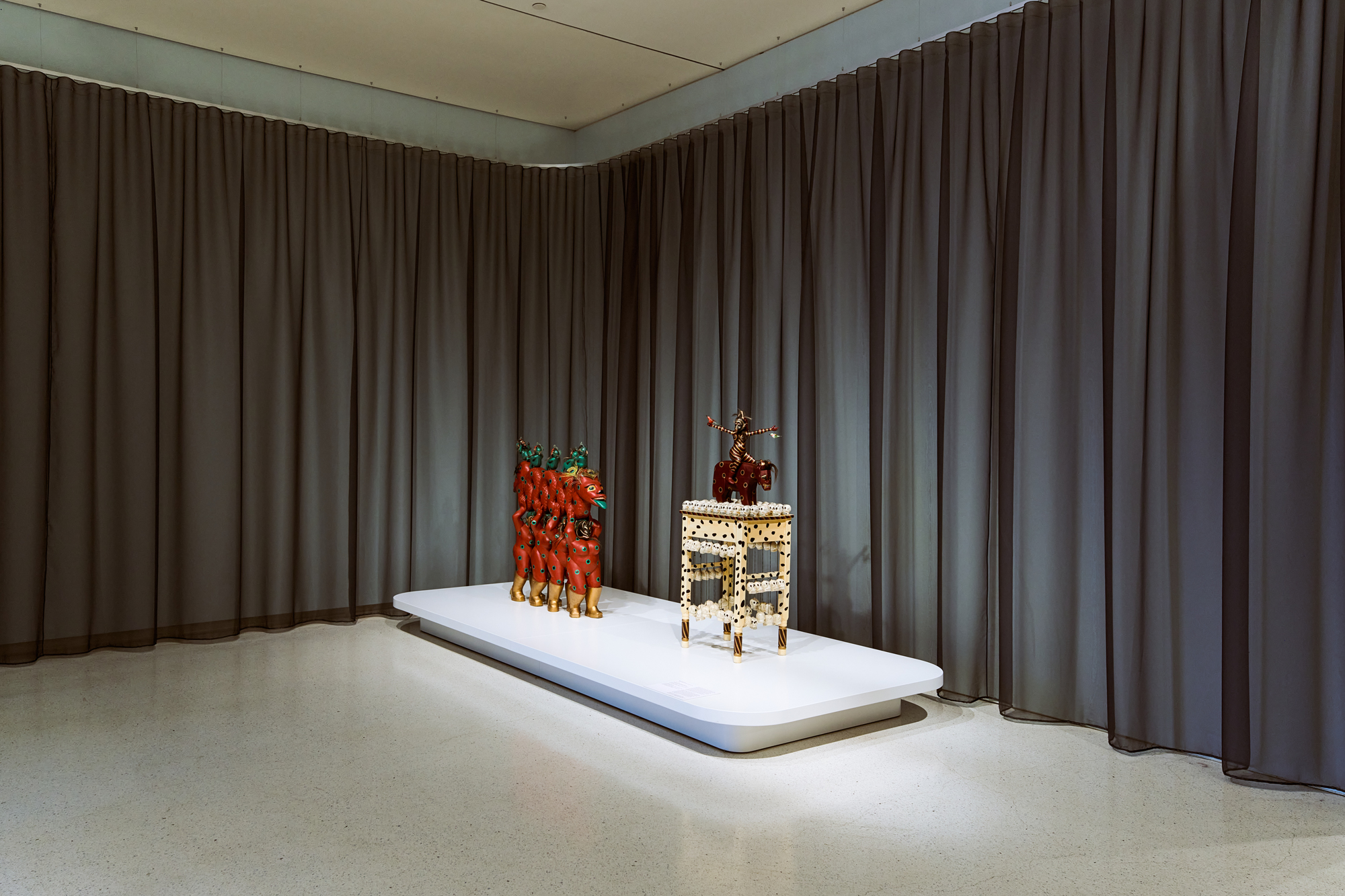
58th carnegie international
show text
Pittsburgh, Pennsylvania, USA
September 24, 2022 - April 2, 2023, Exhibition Design
Client: The Carnegie Museum of Art
Design Team: Tei Carpenter and Tanya Maneeintr
Curatorial Team: Sohrab Mohebbi, Ryan Inouye, Talia Heiman
Photography: © Sean Eaton
The exhibition design for the 58th Carnegie International includes an identity, spatial design, and custom
furniture and casework across diverse gallery spaces at the Carnegie Museum of Art. It is guided by the
curatorial concept of solidarity and creates a polyphonic viewing experience to build relationships between
works across multiple geographies, time frames and perspectives. Rather than adding walls to define space,
the design divides spaces without visual boundaries, featuring a hanging curtain system of metal mesh
chainmail and iridescent sheer curtains. It is a flexible and modular display system that produces a sense
of immersiveness and softness for viewers, creating framed backdrops, doorways, and volumetric chambers that
can either work together as a sequence or stand alone.
.jpg)
58th carnegie international
show text
Pittsburgh, Pennsylvania, USA
September 24, 2022 - April 2, 2023, Exhibition Design
Client: The Carnegie Museum of Art
Design Team: Tei Carpenter and Tanya Maneeintr
Curatorial Team: Sohrab Mohebbi, Ryan Inouye, Talia Heiman
Photography: © Sean Eaton
The exhibition design for the 58th Carnegie International includes an identity, spatial design, and custom
furniture and casework across diverse gallery spaces at the Carnegie Museum of Art. It is guided by the
curatorial concept of solidarity and creates a polyphonic viewing experience to build relationships between
works across multiple geographies, time frames and perspectives. Rather than adding walls to define space,
the design divides spaces without visual boundaries, featuring a hanging curtain system of metal mesh
chainmail and iridescent sheer curtains. It is a flexible and modular display system that produces a sense
of immersiveness and softness for viewers, creating framed backdrops, doorways, and volumetric chambers that
can either work together as a sequence or stand alone.
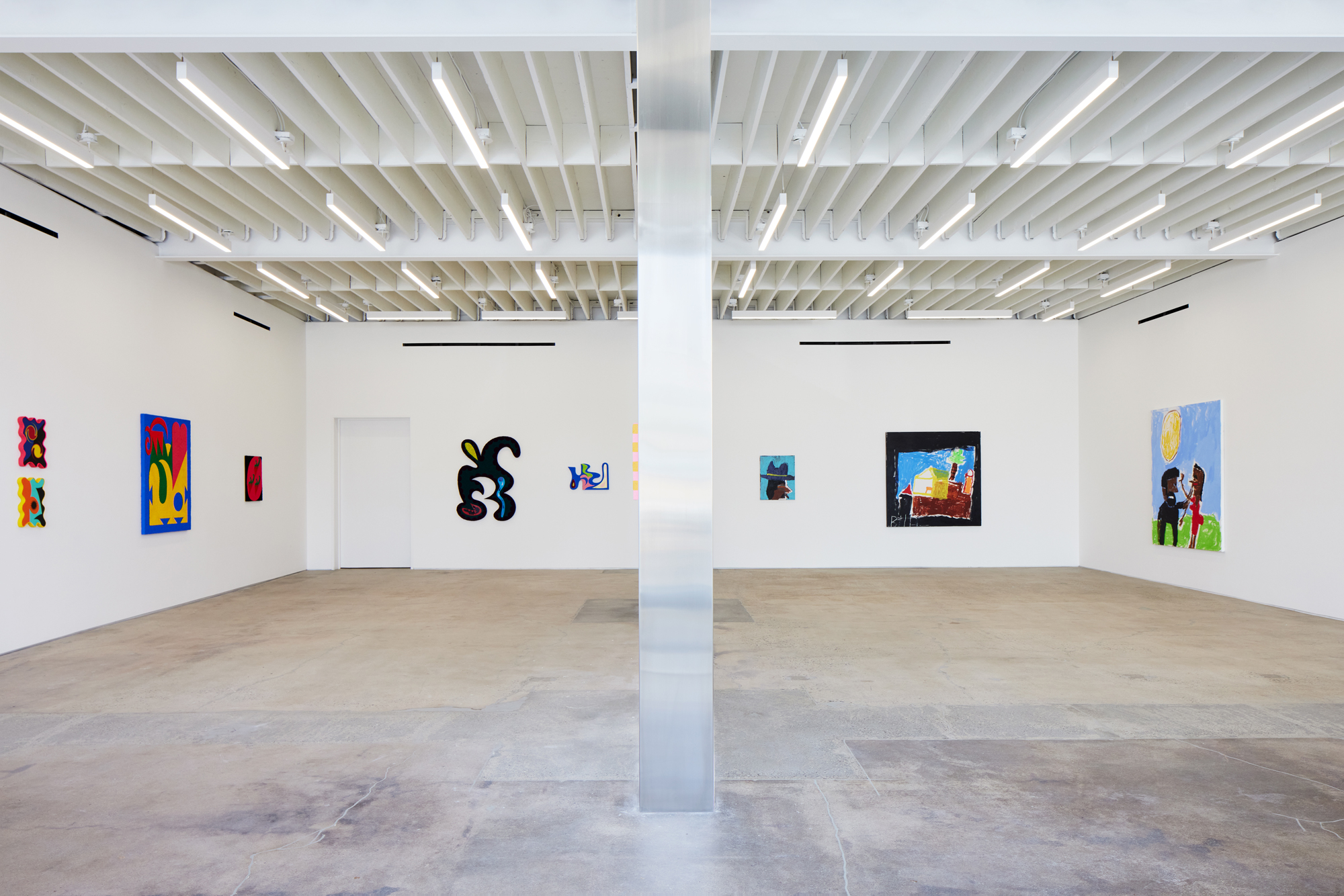
shrine / sargent’s daughters gallery
show text
Los Angeles, California, USA
2023
Client: SHRINE Gallery and Sargent’s Daughters Gallery
Team: Tei Carpenter, Tanya Maneeintr
Architect of Record: Hye-Young Chung Architecture
Lighting: Maura Clark Studio
Photography: © Yerin Mok
For the West Coast locations of SHRINE and Sargent’s Daughters galleries, a partial wall is introduced so
that the space can function as both two separate galleries and also be combined into a single larger space.
A brushed aluminum panel at each end of the wall visually dissolves the division upon entry into the space.
A shared viewing room, kitchen, WC, and handling area is located in the back of the gallery. The glass
facade is significantly enlarged to create 11’ tall doors and exterior glass facades, while the linear
lighting fixtures carefully integrate with the existing exposed ceiling structure.
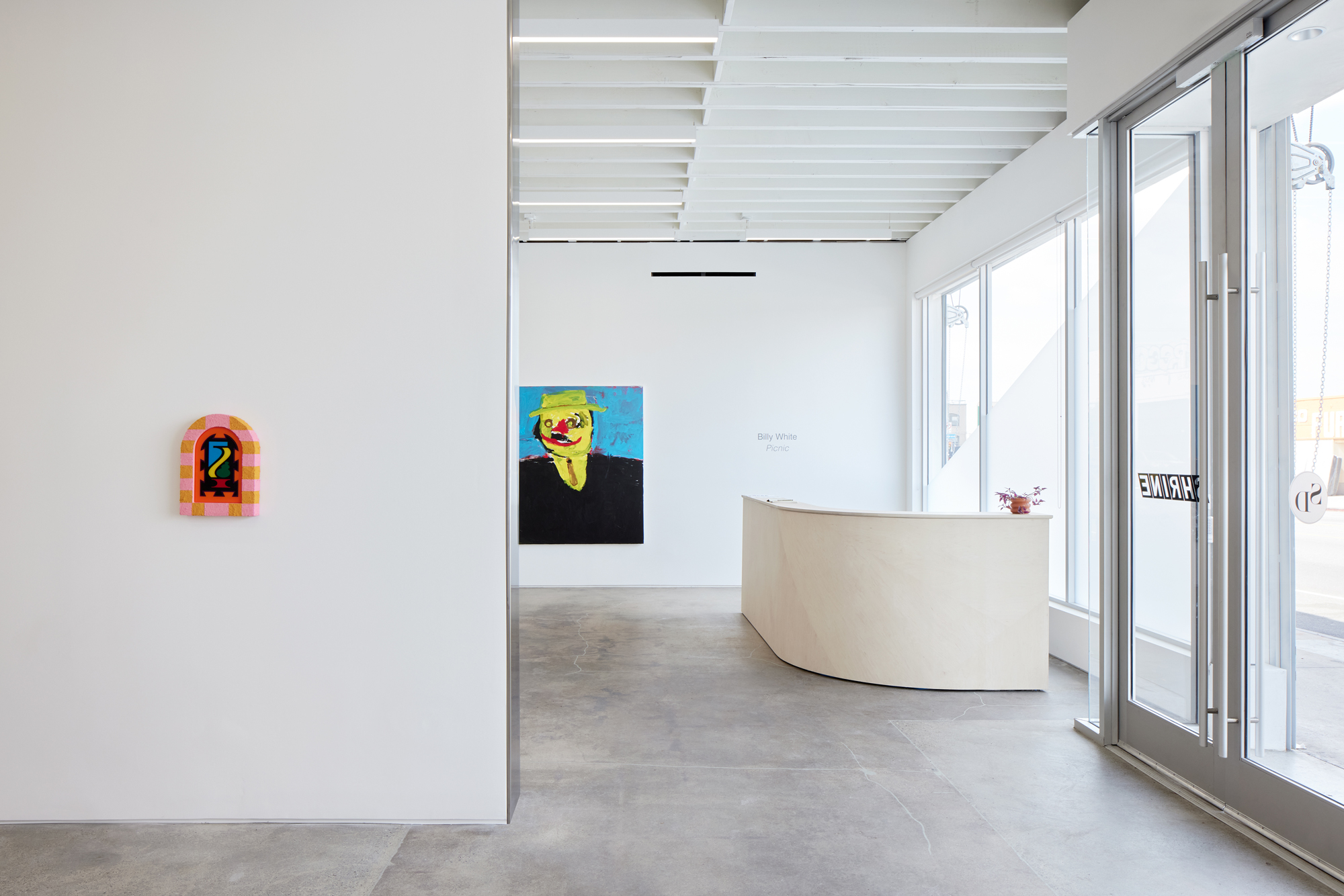
shrine / sargent’s daughters gallery
show text
Los Angeles, California, USA
2023
Client: SHRINE Gallery and Sargent’s Daughters Gallery
Team: Tei Carpenter, Tanya Maneeintr
Architect of Record: Hye-Young Chung Architecture
Lighting: Maura Clark Studio
Photography: © Yerin Mok
For the West Coast locations of SHRINE and Sargent’s Daughters galleries, a partial wall is introduced so
that the space can function as both two separate galleries and also be combined into a single larger space.
A brushed aluminum panel at each end of the wall visually dissolves the division upon entry into the space.
A shared viewing room, kitchen, WC, and handling area is located in the back of the gallery. The glass
facade is significantly enlarged to create 11’ tall doors and exterior glass facades, while the linear
lighting fixtures carefully integrate with the existing exposed ceiling structure.
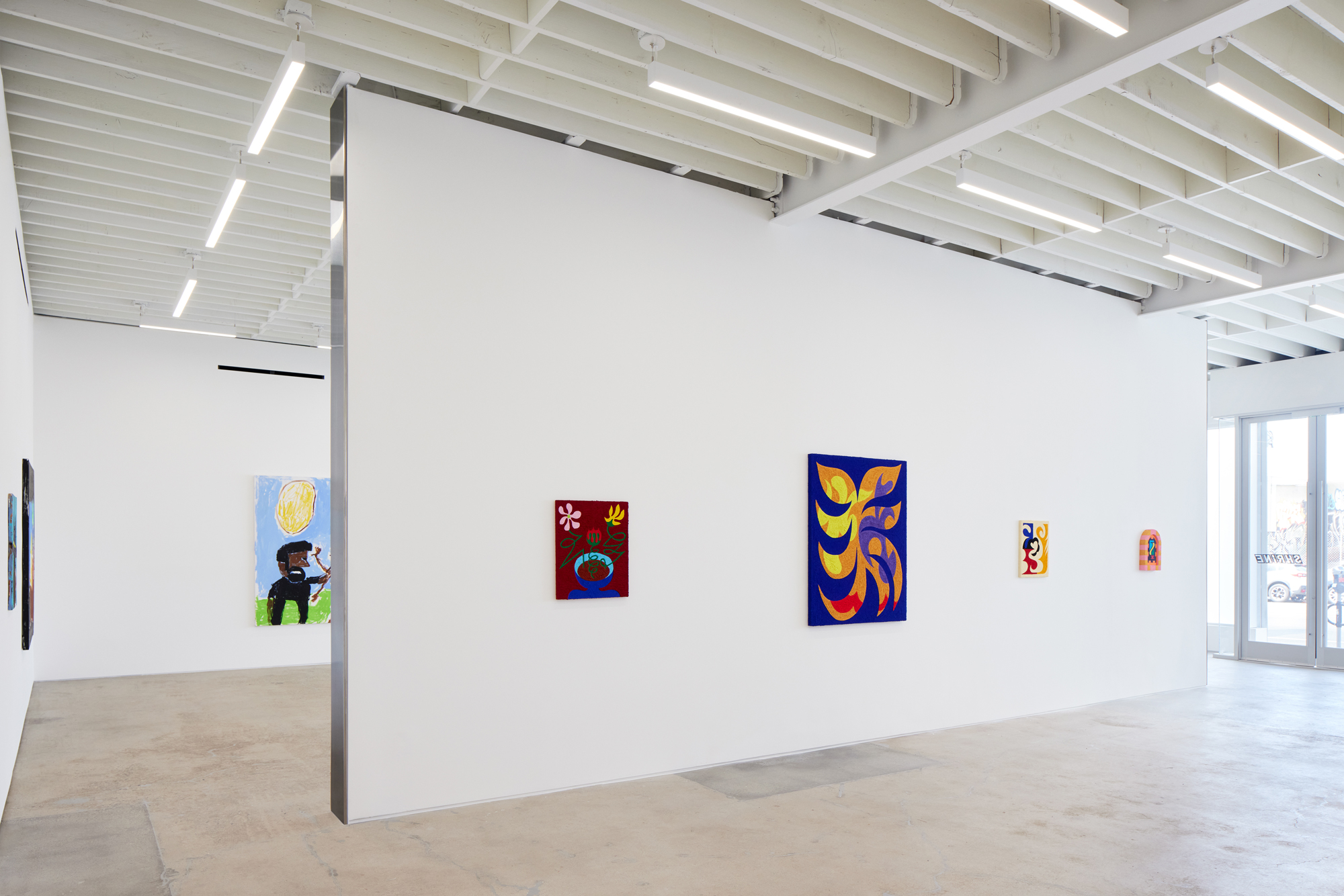
shrine / sargent’s daughters gallery
show text
Los Angeles, California, USA
2023
Client: SHRINE Gallery and Sargent’s Daughters Gallery
Team: Tei Carpenter, Tanya Maneeintr
Architect of Record: Hye-Young Chung Architecture
Lighting: Maura Clark Studio
Photography: © Yerin Mok
For the West Coast locations of SHRINE and Sargent’s Daughters galleries, a partial wall is introduced so
that the space can function as both two separate galleries and also be combined into a single larger space.
A brushed aluminum panel at each end of the wall visually dissolves the division upon entry into the space.
A shared viewing room, kitchen, WC, and handling area is located in the back of the gallery. The glass
facade is significantly enlarged to create 11’ tall doors and exterior glass facades, while the linear
lighting fixtures carefully integrate with the existing exposed ceiling structure.
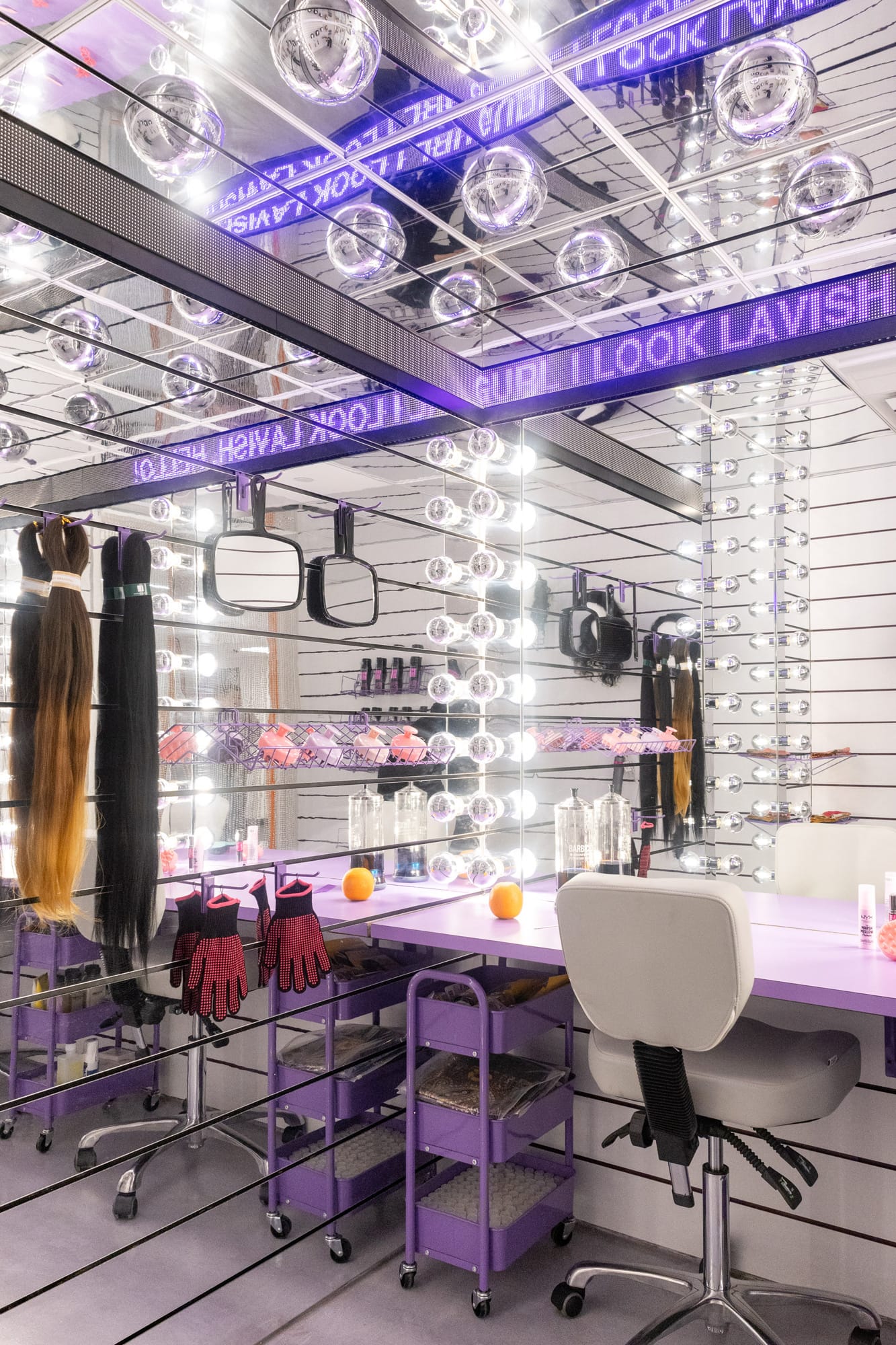
New York, New York, USA
2024
Client: The Museum of Modern Art and the Ali Forney Center
Team: Tei Carpenter, Kelvin Lee, Saralee Sittigaroon, Chris Woebken
Collaborator: Chris Woebken Studio
Fabricators: Obfluent and Pneuhaus
Photography: On White Wall, Inc. Courtesy and © 2024 The Museum of Modern
Art
Commissioned by the Museum of Modern Art, the Sensory Salon workshop and design project redefines queer
youth homeless care through the design of an identity-affirming salon and sensory therapy room as permanent
installations at the Ali Forney Center’s new headquarters and drop-in center in Times Square. Initiated
through a hands-on, participatory design workshop with AFC youth and staff, the designs directly reflect the
needs and imaginations of the people who will use the spaces. The salon is a space for empowering diverse
ideas of beauty, centering of queer expression, and a community resource for learning. It is designed with a
flexible mirrored slatwall system and an integrated LED strip that wraps the room with custom affirmation
text directly input by AFC clients and staff. The sensory therapy room is a space for calm, reset and
multi-sensorial stimulation with special attention to neurodivergent clients. A circle of three tactile
hanging curtains featuring metal ball chain, a sheer curtain, and an earthy dense fabric are sensorial and
visual devices that encircle a custom inflatable daybed and seating for therapy and stimulation.
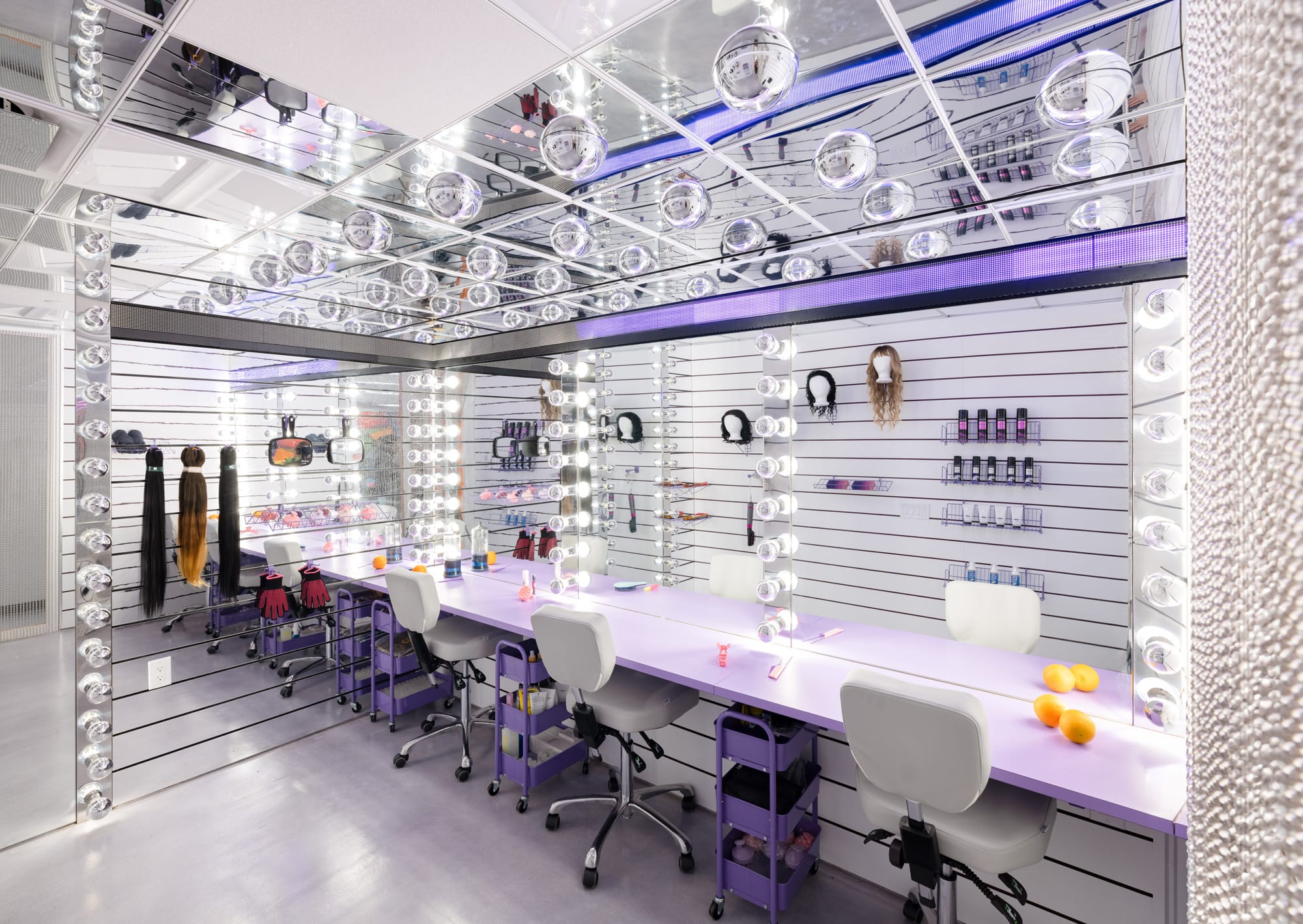
New York, New York, USA
2024
Client: The Museum of Modern Art and the Ali Forney Center
Team: Tei Carpenter, Kelvin Lee, Saralee Sittigaroon, Chris Woebken
Collaborator: Chris Woebken Studio
Fabricators: Obfluent and Pneuhaus
Photography: On White Wall, Inc. Courtesy and © 2024 The Museum of Modern
Art
Commissioned by the Museum of Modern Art, the Sensory Salon workshop and design project redefines queer
youth homeless care through the design of an identity-affirming salon and sensory therapy room as permanent
installations at the Ali Forney Center’s new headquarters and drop-in center in Times Square. Initiated
through a hands-on, participatory design workshop with AFC youth and staff, the designs directly reflect the
needs and imaginations of the people who will use the spaces. The salon is a space for empowering diverse
ideas of beauty, centering of queer expression, and a community resource for learning. It is designed with a
flexible mirrored slatwall system and an integrated LED strip that wraps the room with custom affirmation
text directly input by AFC clients and staff. The sensory therapy room is a space for calm, reset and
multi-sensorial stimulation with special attention to neurodivergent clients. A circle of three tactile
hanging curtains featuring metal ball chain, a sheer curtain, and an earthy dense fabric are sensorial and
visual devices that encircle a custom inflatable daybed and seating for therapy and stimulation.
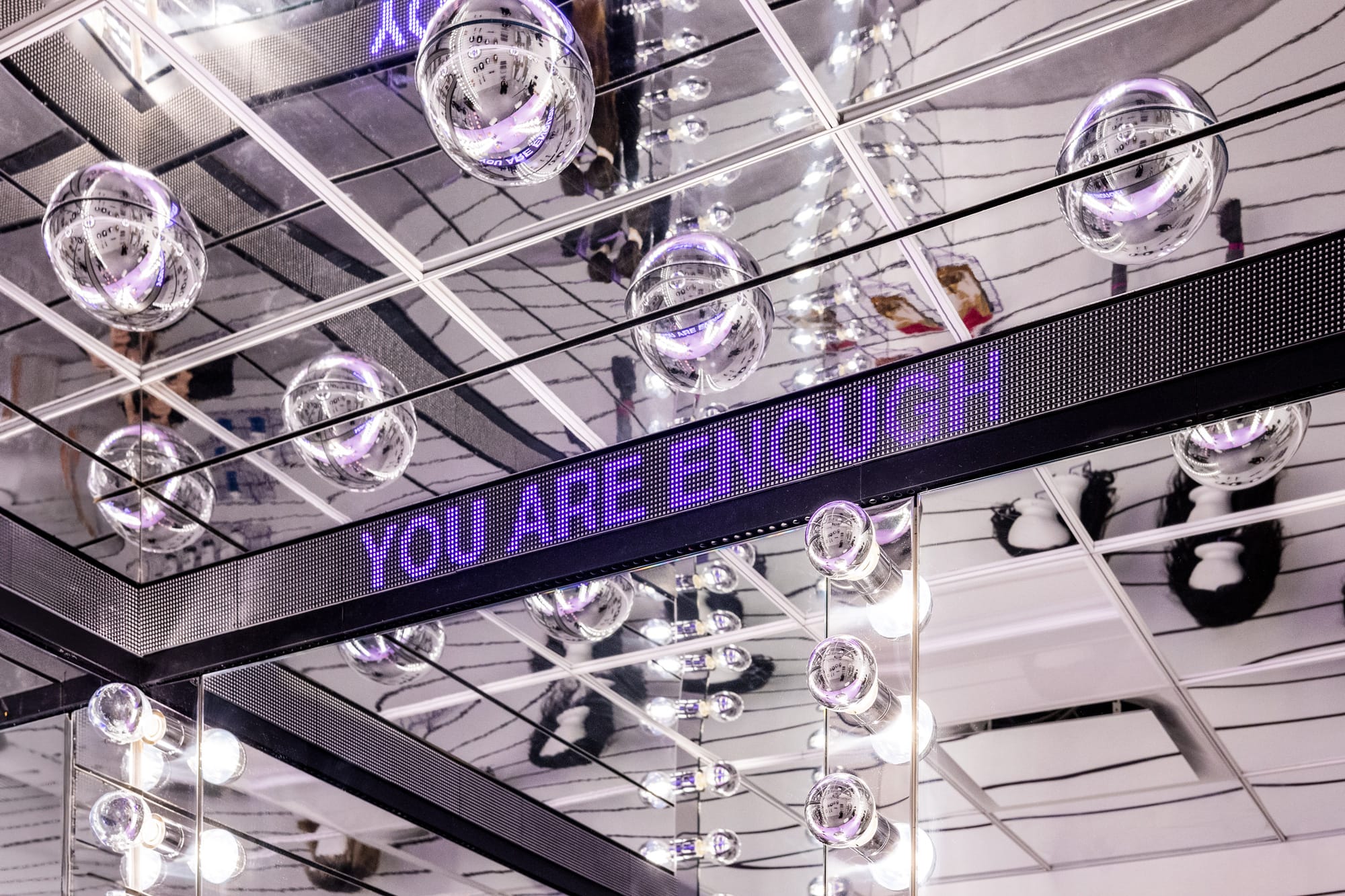
New York, New York, USA
2024
Client: The Museum of Modern Art and the Ali Forney Center
Team: Tei Carpenter, Kelvin Lee, Saralee Sittigaroon, Chris Woebken
Collaborator: Chris Woebken Studio
Fabricators: Obfluent and Pneuhaus
Photography: On White Wall, Inc. Courtesy and © 2024 The Museum of Modern
Art
Commissioned by the Museum of Modern Art, the Sensory Salon workshop and design project redefines queer
youth homeless care through the design of an identity-affirming salon and sensory therapy room as permanent
installations at the Ali Forney Center’s new headquarters and drop-in center in Times Square. Initiated
through a hands-on, participatory design workshop with AFC youth and staff, the designs directly reflect the
needs and imaginations of the people who will use the spaces. The salon is a space for empowering diverse
ideas of beauty, centering of queer expression, and a community resource for learning. It is designed with a
flexible mirrored slatwall system and an integrated LED strip that wraps the room with custom affirmation
text directly input by AFC clients and staff. The sensory therapy room is a space for calm, reset and
multi-sensorial stimulation with special attention to neurodivergent clients. A circle of three tactile
hanging curtains featuring metal ball chain, a sheer curtain, and an earthy dense fabric are sensorial and
visual devices that encircle a custom inflatable daybed and seating for therapy and stimulation.
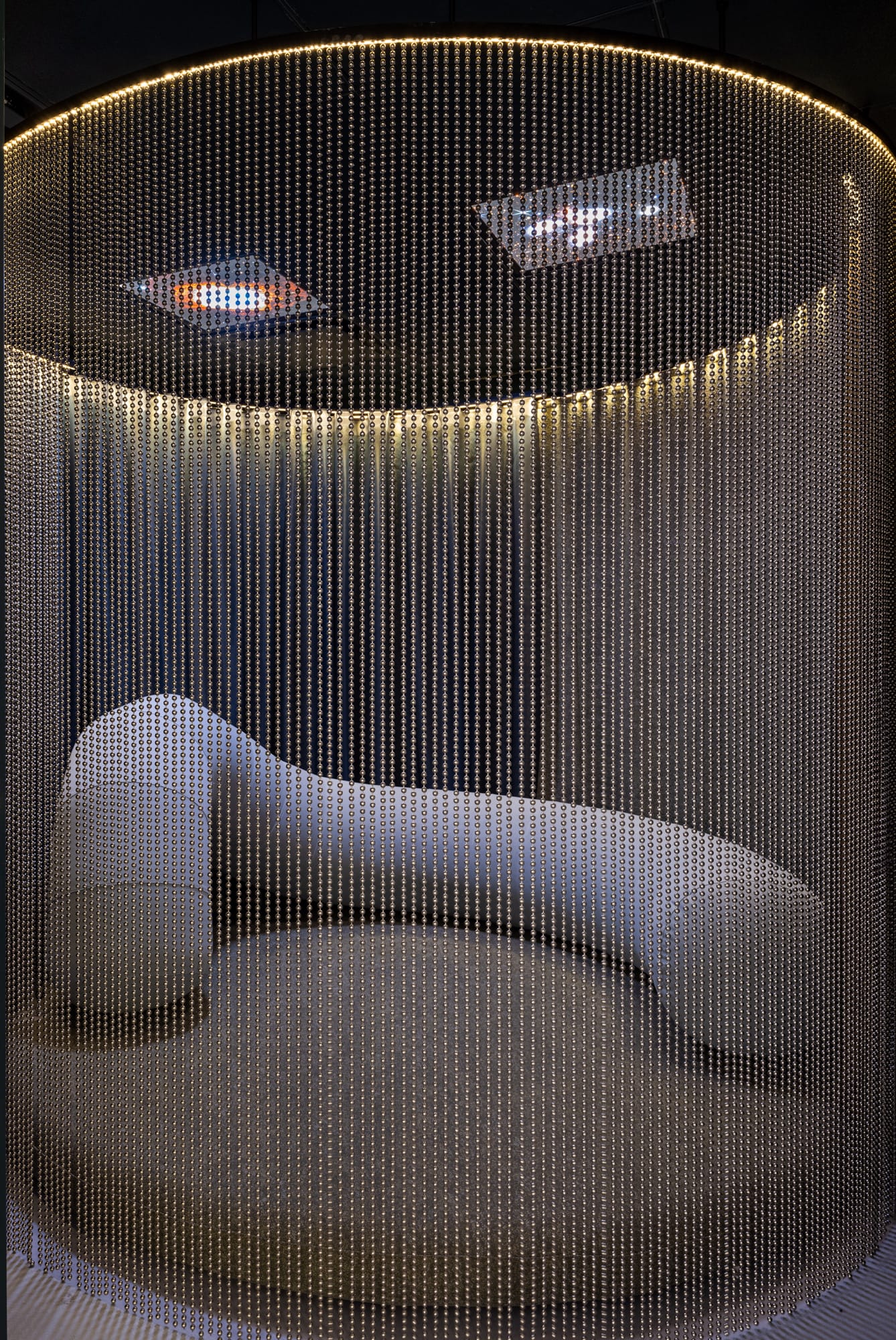
New York, New York, USA
2024
Client: The Museum of Modern Art and the Ali Forney Center
Team: Tei Carpenter, Kelvin Lee, Saralee Sittigaroon, Chris Woebken
Collaborator: Chris Woebken Studio
Fabricators: Obfluent and Pneuhaus
Photography: On White Wall, Inc. Courtesy and © 2024 The Museum of Modern
Art
Commissioned by the Museum of Modern Art, the Sensory Salon workshop and design project redefines queer
youth homeless care through the design of an identity-affirming salon and sensory therapy room as permanent
installations at the Ali Forney Center’s new headquarters and drop-in center in Times Square. Initiated
through a hands-on, participatory design workshop with AFC youth and staff, the designs directly reflect the
needs and imaginations of the people who will use the spaces. The salon is a space for empowering diverse
ideas of beauty, centering of queer expression, and a community resource for learning. It is designed with a
flexible mirrored slatwall system and an integrated LED strip that wraps the room with custom affirmation
text directly input by AFC clients and staff. The sensory therapy room is a space for calm, reset and
multi-sensorial stimulation with special attention to neurodivergent clients. A circle of three tactile
hanging curtains featuring metal ball chain, a sheer curtain, and an earthy dense fabric are sensorial and
visual devices that encircle a custom inflatable daybed and seating for therapy and stimulation.

city lighthouse
show text
Xinyang, China
2024
Client: City of Xinyang
Team: Tei Carpenter, Andrew Keung, Tanya Maneeintr
City Lighthouse hosts a community library centered around music, outdoor reading rooms, a gallery for
rotating exhibitions on local heritage, and communal workspaces. The project is organized around three main
supercores that elevate the library into the air and into the surrounding tree canopy, integrating light
shaft, structure, circulation, and community services such as restrooms, kitchen, and community library
lending shelves. The trees themselves become both the facade and a shading device for the library on the top
floor. A covered outdoor performance space sits underneath the elevated library. Designed with natural
materials including wood and bamboo, the building integrates a green roof above a glass facade on the top
floor with ample shading which creates a lighthouse for the community during the day and night.

city lighthouse
show text
Xinyang, China
2024
Client: City of Xinyang
Team: Tei Carpenter, Andrew Keung, Tanya Maneeintr
City Lighthouse hosts a community library centered around music, outdoor reading rooms, a gallery for
rotating exhibitions on local heritage, and communal workspaces. The project is organized around three main
supercores that elevate the library into the air and into the surrounding tree canopy, integrating light
shaft, structure, circulation, and community services such as restrooms, kitchen, and community library
lending shelves. The trees themselves become both the facade and a shading device for the library on the top
floor. A covered outdoor performance space sits underneath the elevated library. Designed with natural
materials including wood and bamboo, the building integrates a green roof above a glass facade on the top
floor with ample shading which creates a lighthouse for the community during the day and night.

city lighthouse
show text
Xinyang, China
2024
Client: City of Xinyang
Team: Tei Carpenter, Andrew Keung, Tanya Maneeintr
City Lighthouse hosts a community library centered around music, outdoor reading rooms, a gallery for
rotating exhibitions on local heritage, and communal workspaces. The project is organized around three main
supercores that elevate the library into the air and into the surrounding tree canopy, integrating light
shaft, structure, circulation, and community services such as restrooms, kitchen, and community library
lending shelves. The trees themselves become both the facade and a shading device for the library on the top
floor. A covered outdoor performance space sits underneath the elevated library. Designed with natural
materials including wood and bamboo, the building integrates a green roof above a glass facade on the top
floor with ample shading which creates a lighthouse for the community during the day and night.
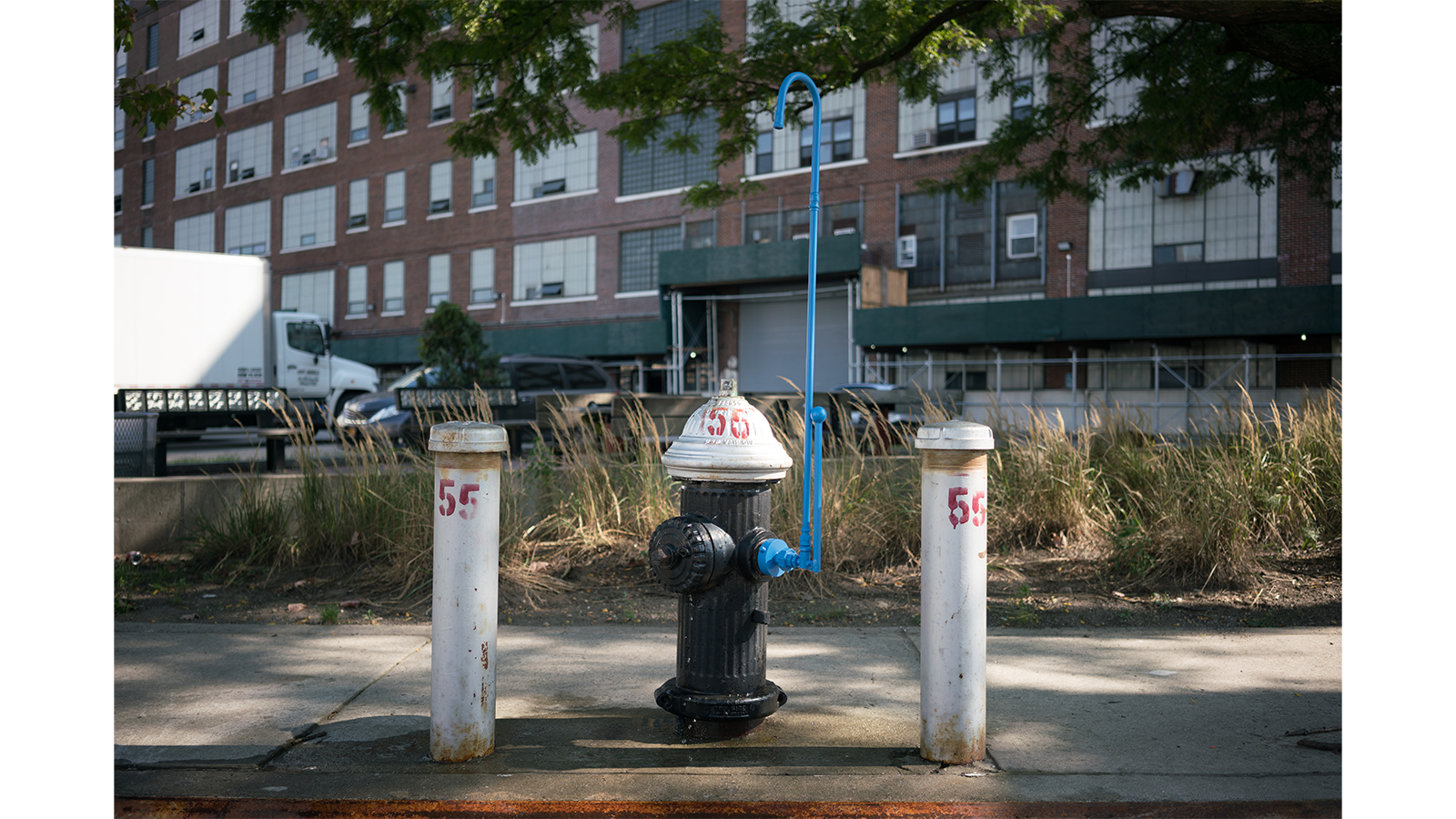
new public hydrant
show text
New York, New York, USA
2018 / 2022
Client: BMW Mini at A/D/O
Team: Tei Carpenter, Chris Woebken, Arianna Deane, Ashely Kuo, Zeynep Ugur
Collaborator: Chris Woebken Studio
New Public Hydrant engages with the fire hydrant as a small-scale water infrastructure in New York
City to inspire surprising new forms of public interactions surrounding our emergency infrastructure and the
city’s high quality drinking water supply. The installation includes three “hydrant hacks”: Hydrants for All
is a multi-species fountain, Hydrant on Tap is a bottle fill station and Hydration Space is an immersive
microclimate sprinkler. The “Water Is...” Workshop with the Youth Design Center extended this project with
youth collaborators to design two more prototypes including “Solar Tea Station,” a solar hot water heater
and “Sprinkler Boom Box,” a sprinkler that can make music using hydropower. The project was featured in the
Museum of Modern Art’s
Architecture Now: New York New Publics
exhibition.
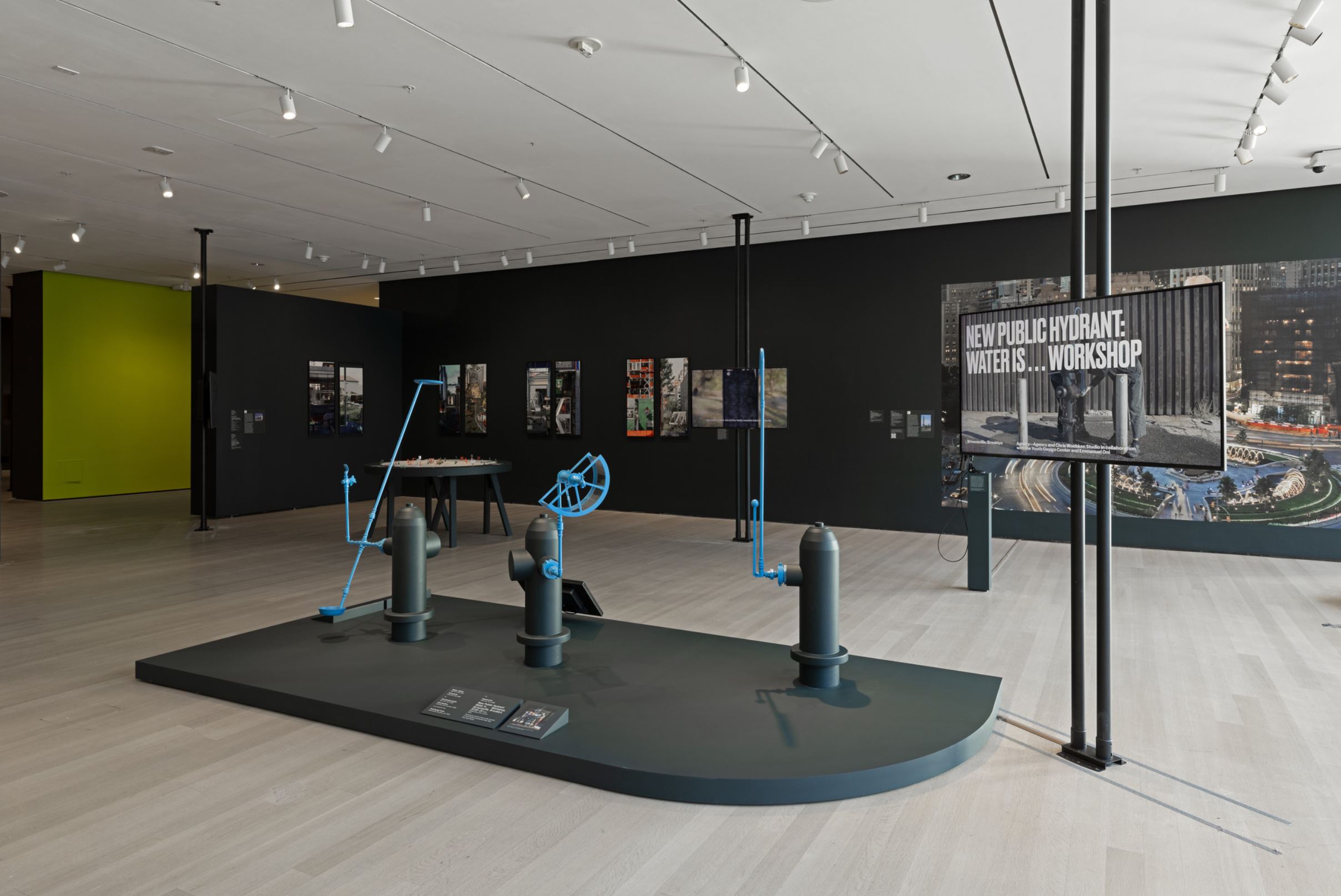
new public hydrant
show text
New York, New York, USA
2018 / 2022
Client: BMW Mini at A/D/O
Team: Tei Carpenter, Chris Woebken, Arianna Deane, Ashely Kuo, Zeynep Ugur
Collaborator: Chris Woebken Studio
New Public Hydrant engages with the fire hydrant as a small-scale water infrastructure in New York
City to inspire surprising new forms of public interactions surrounding our emergency infrastructure and the
city’s high quality drinking water supply. The installation includes three “hydrant hacks”: Hydrants for All
is a multi-species fountain, Hydrant on Tap is a bottle fill station and Hydration Space is an immersive
microclimate sprinkler. The “Water Is...” Workshop with the Youth Design Center extended this project with
youth collaborators to design two more prototypes including “Solar Tea Station,” a solar hot water heater
and “Sprinkler Boom Box,” a sprinkler that can make music using hydropower. The project was featured in the
Museum of Modern Art’s
Architecture Now: New York New Publics
exhibition.

new public hydrant
show text
New York, New York, USA
2018 / 2022
Client: BMW Mini at A/D/O
Team: Tei Carpenter, Chris Woebken, Arianna Deane, Ashely Kuo, Zeynep Ugur
Collaborator: Chris Woebken Studio
New Public Hydrant engages with the fire hydrant as a small-scale water infrastructure in New York
City to inspire surprising new forms of public interactions surrounding our emergency infrastructure and the
city’s high quality drinking water supply. The installation includes three “hydrant hacks”: Hydrants for All
is a multi-species fountain, Hydrant on Tap is a bottle fill station and Hydration Space is an immersive
microclimate sprinkler. The “Water Is...” Workshop with the Youth Design Center extended this project with
youth collaborators to design two more prototypes including “Solar Tea Station,” a solar hot water heater
and “Sprinkler Boom Box,” a sprinkler that can make music using hydropower. The project was featured in the
Museum of Modern Art’s
Architecture Now: New York New Publics
exhibition.
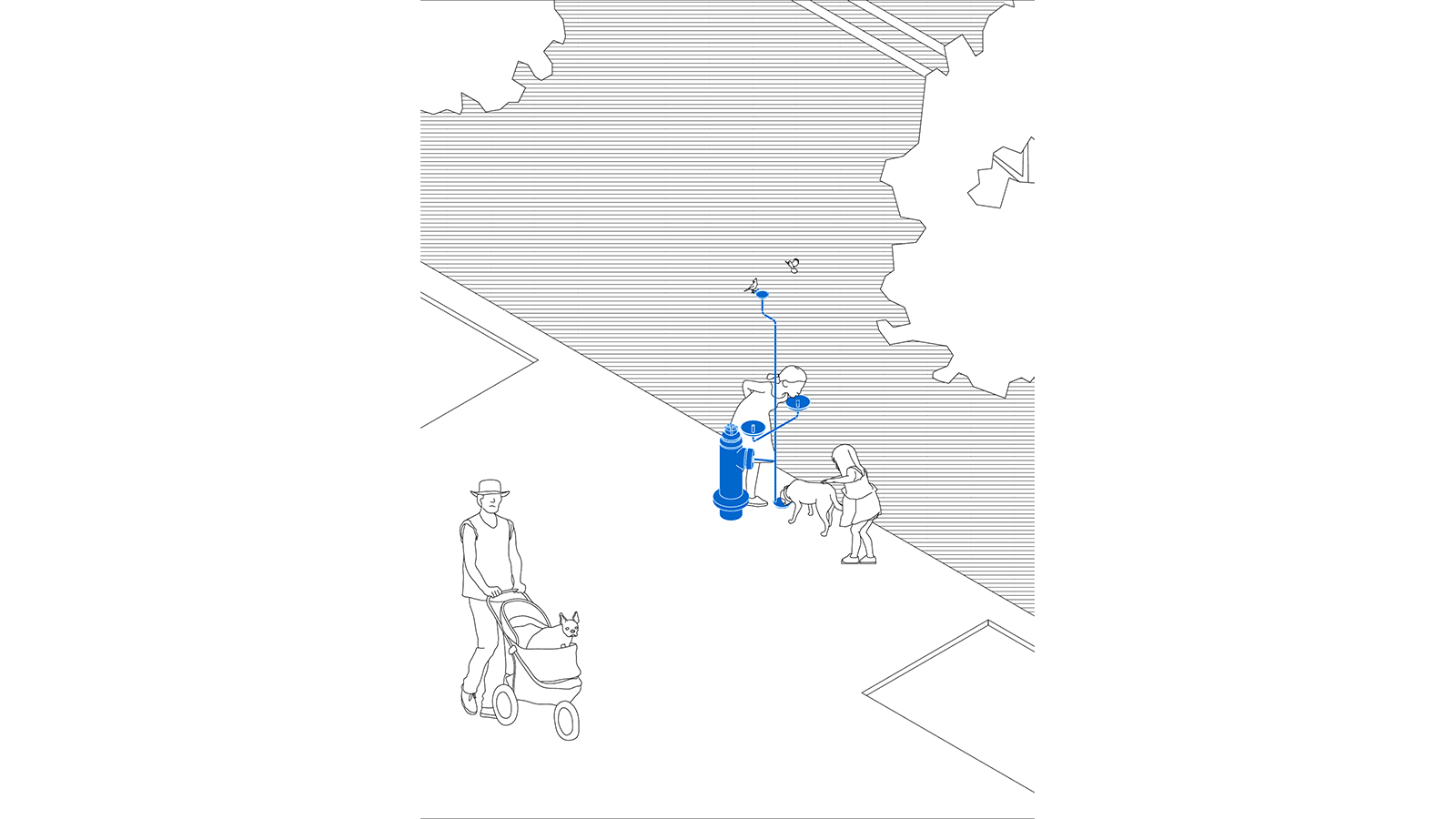
new public hydrant
show text
New York, New York, USA
2018 / 2022
Client: BMW Mini at A/D/O
Team: Tei Carpenter, Chris Woebken, Arianna Deane, Ashely Kuo, Zeynep Ugur
Collaborator: Chris Woebken Studio
New Public Hydrant engages with the fire hydrant as a small-scale water infrastructure in New York
City to inspire surprising new forms of public interactions surrounding our emergency infrastructure and the
city’s high quality drinking water supply. The installation includes three “hydrant hacks”: Hydrants for All
is a multi-species fountain, Hydrant on Tap is a bottle fill station and Hydration Space is an immersive
microclimate sprinkler. The “Water Is...” Workshop with the Youth Design Center extended this project with
youth collaborators to design two more prototypes including “Solar Tea Station,” a solar hot water heater
and “Sprinkler Boom Box,” a sprinkler that can make music using hydropower. The project was featured in the
Museum of Modern Art’s
Architecture Now: New York New Publics
exhibition.
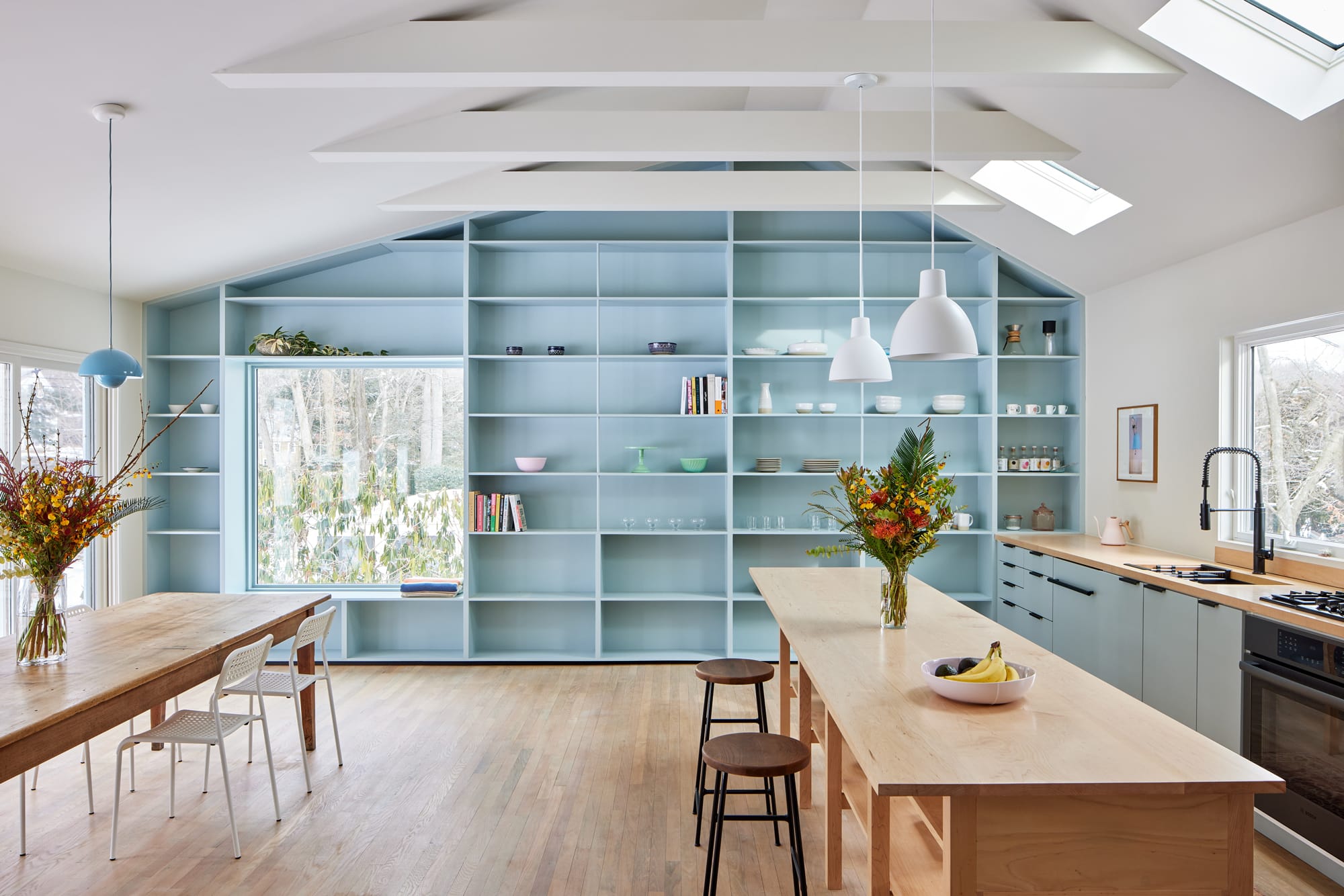
connecticut house
show text
Hamden, Connecticut, USA
2021
Client: Private
Team: Tei Carpenter, Ian Cheung
Photography: © Kirsten Francis
A gut renovation of a 1927 home that combines an existing outdoor terrace with a dining area to create a
gracious 550 sf kitchen filled with light. A full height custom millwork wall integrates shelving with a
picture window and window seat looking out to the forest beyond. The kitchen includes a custom wood
furniture element for seating and storage that extends into a utility room with open shelving.
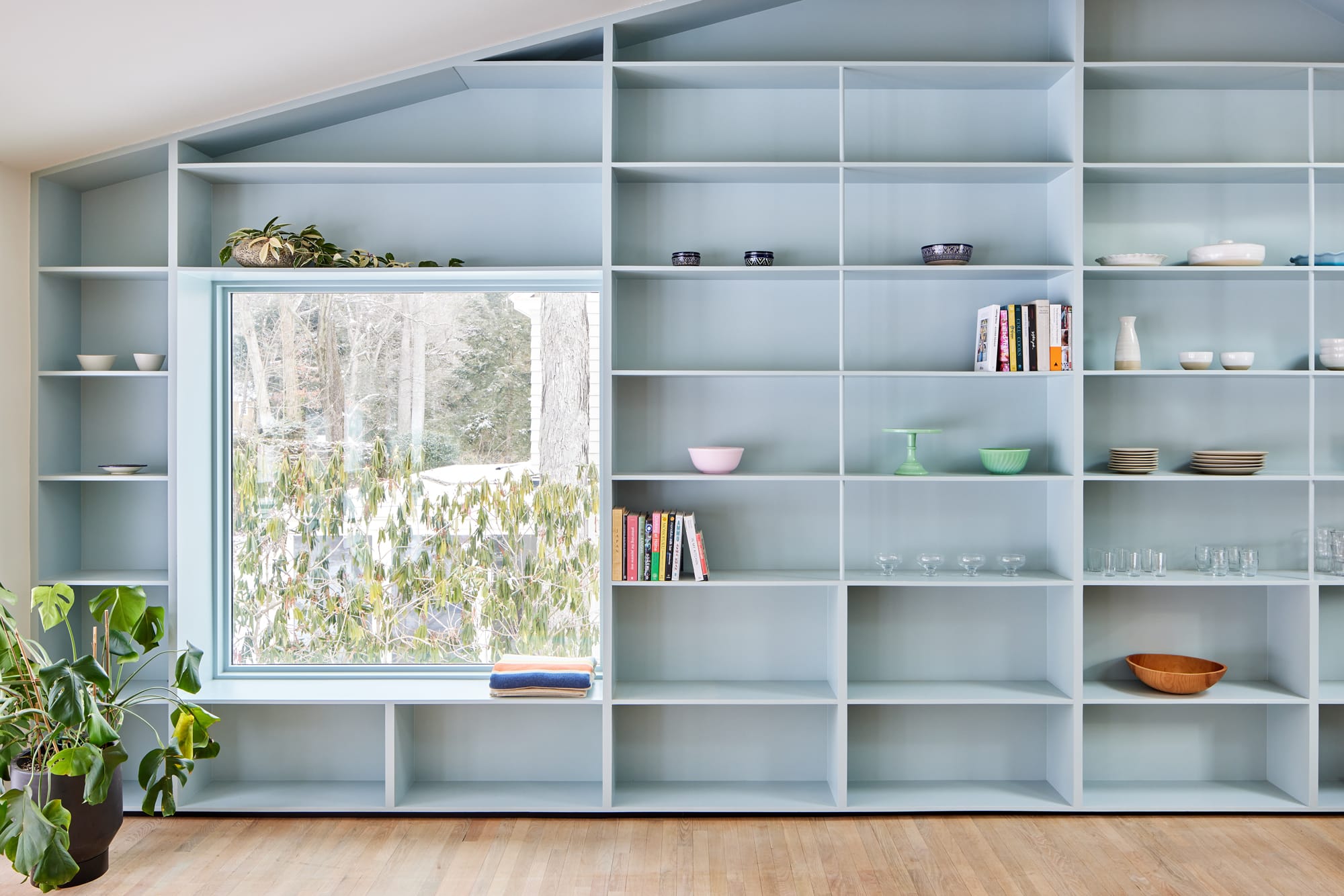
connecticut house
show text
Hamden, Connecticut, USA
2021
Client: Private
Team: Tei Carpenter, Ian Cheung
Photography: © Kirsten Francis
A gut renovation of a 1927 home that combines an existing outdoor terrace with a dining area to create a
gracious 550 sf kitchen filled with light. A full height custom millwork wall integrates shelving with a
picture window and window seat looking out to the forest beyond. The kitchen includes a custom wood
furniture element for seating and storage that extends into a utility room with open shelving.
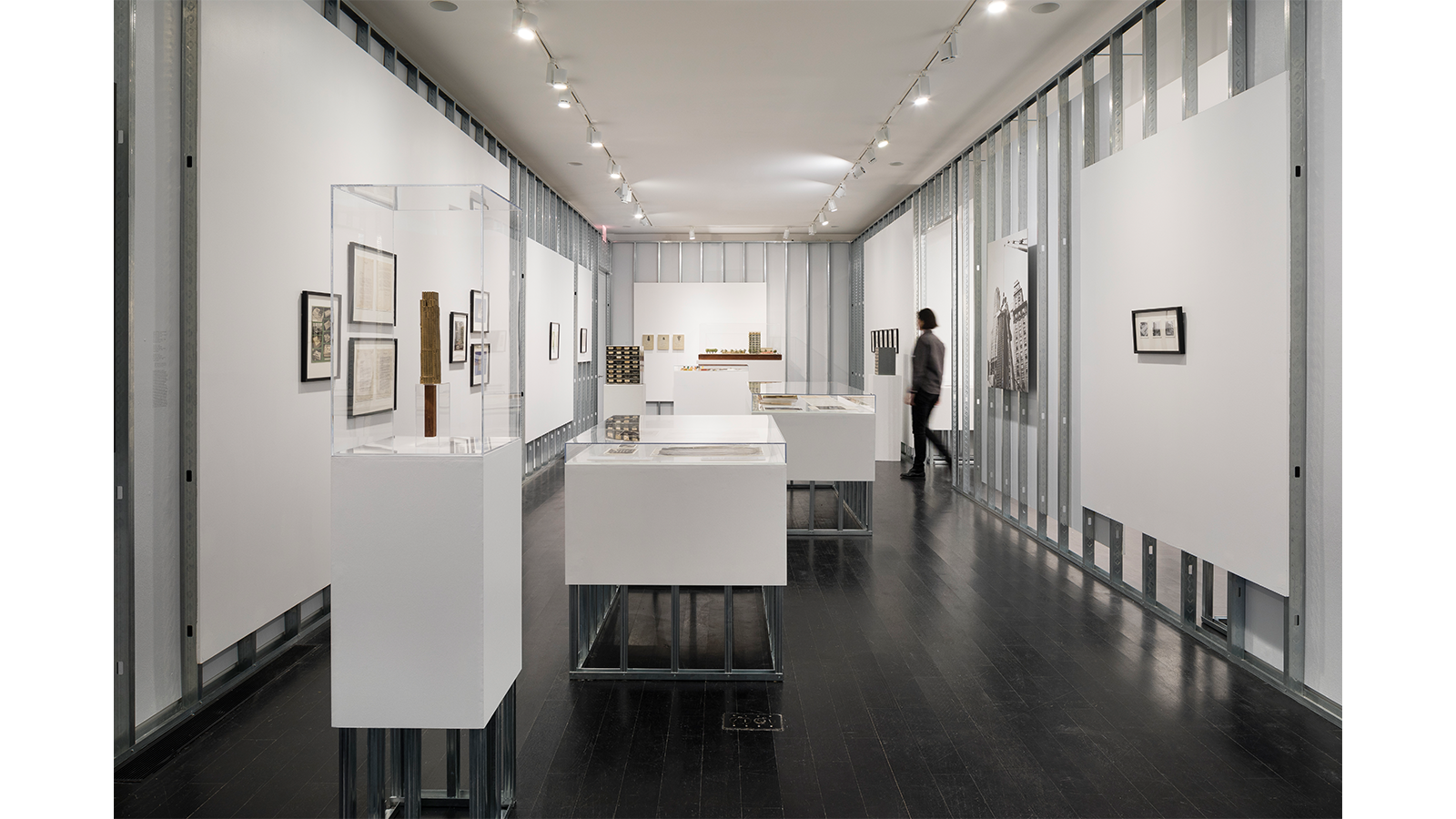
model projections
show text
Arthur Ross Architecture Gallery, Columbia GSAPP, New York, New York, USA
October 4—December 15 2018, Exhibition Design
Client: Columbia University
Design Team: Tei Carpenter, Minjae Kim, Sadie Dempsey
Curatorial Team: Jennifer Gray, Irene Sunwoo, Tiffany Lambert
Text: Columbia GSAPP Exhibitions
Photography: © James Ewing
Model Projections investigates the complex pathways between architecture and its representations
through an examination of the practice of model making. It explores the ephemeral registers of architectural
production, revealing the model itself as a site of collaboration, negotiation, and speculation—not unlike
the full-scale building that it anticipated. The exhibition design is an immersive installation and display
system that uses off-the-shelf materials—drywall fragments, exposed metal studs—to evoke an architectural
work-in-progress. Embracing the artifice and provisional nature of models, the exhibition design oscillates
between multiple scales, intertwining the materials and methods of model making and architectural
construction. Editor’s Pick for Exhibition Design from the Architects’ Newspaper 2019 Best of Design
Awards.
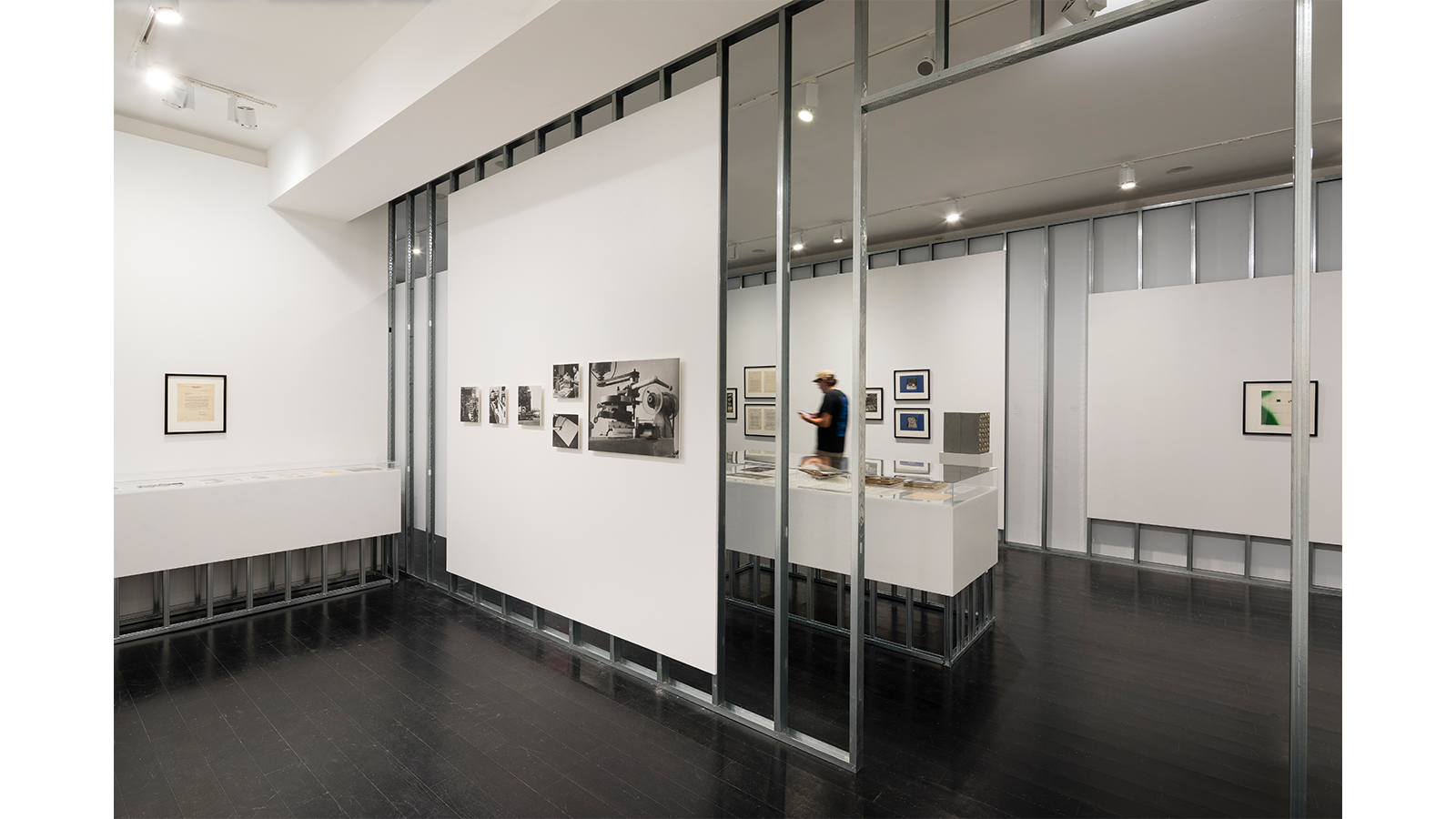
model projections
show text
Arthur Ross Architecture Gallery, Columbia GSAPP, New York, New York, USA
October 4—December 15 2018, Exhibition Design
Client: Columbia University
Design Team: Tei Carpenter, Minjae Kim, Sadie Dempsey
Curatorial Team: Jennifer Gray, Irene Sunwoo, Tiffany Lambert
Text: Columbia GSAPP Exhibitions
Photography: © James Ewing
Model Projections investigates the complex pathways between architecture and its representations
through an examination of the practice of model making. It explores the ephemeral registers of architectural
production, revealing the model itself as a site of collaboration, negotiation, and speculation—not unlike
the full-scale building that it anticipated. The exhibition design is an immersive installation and display
system that uses off-the-shelf materials—drywall fragments, exposed metal studs—to evoke an architectural
work-in-progress. Embracing the artifice and provisional nature of models, the exhibition design oscillates
between multiple scales, intertwining the materials and methods of model making and architectural
construction. Editor’s Pick for Exhibition Design from the Architects’ Newspaper 2019 Best of Design
Awards.
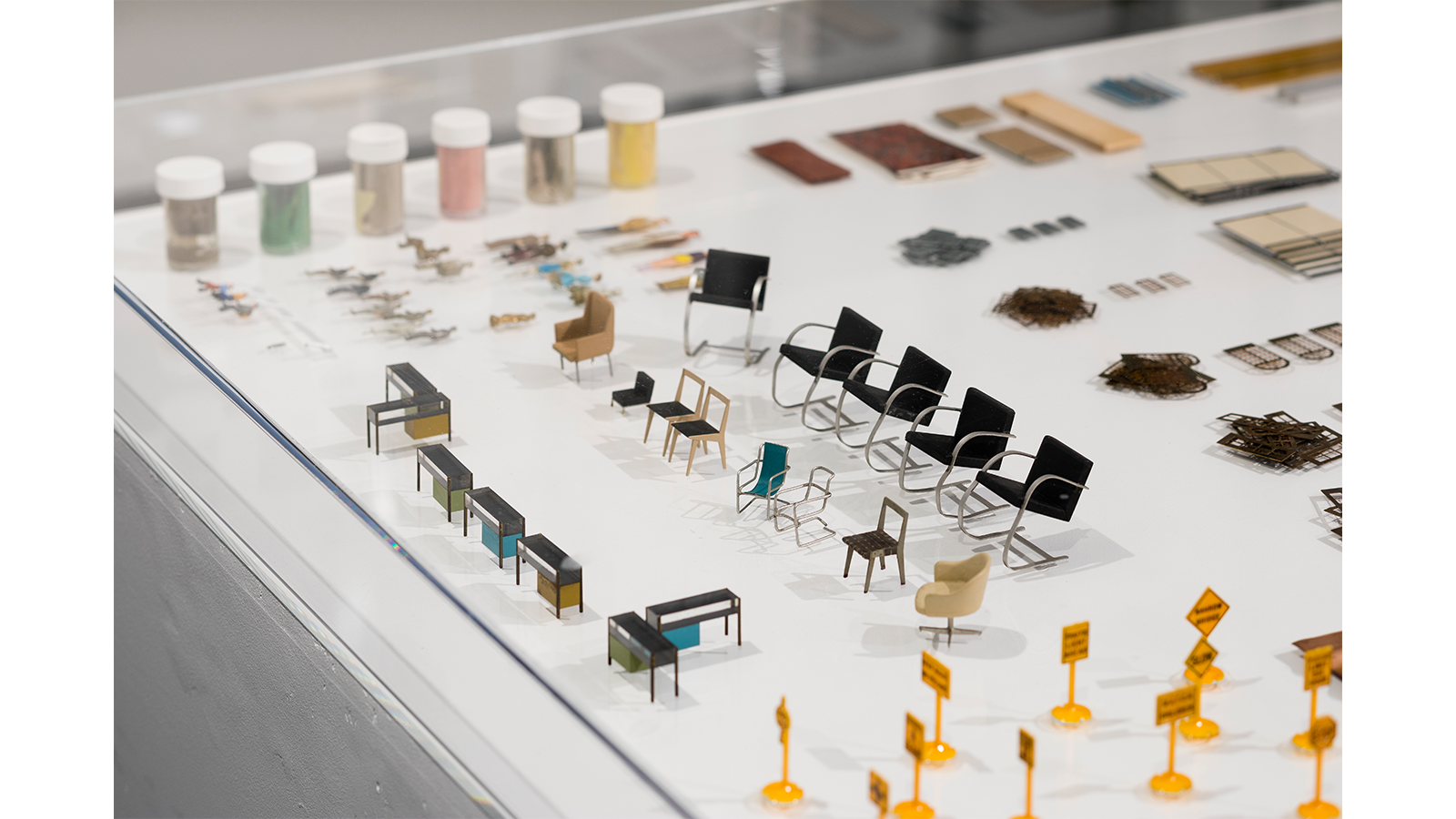
model projections
show text
Arthur Ross Architecture Gallery, Columbia GSAPP, New York, New York, USA
October 4—December 15 2018, Exhibition Design
Client: Columbia University
Design Team: Tei Carpenter, Minjae Kim, Sadie Dempsey
Curatorial Team: Jennifer Gray, Irene Sunwoo, Tiffany Lambert
Text: Columbia GSAPP Exhibitions
Photography: © James Ewing
Model Projections investigates the complex pathways between architecture and its representations
through an examination of the practice of model making. It explores the ephemeral registers of architectural
production, revealing the model itself as a site of collaboration, negotiation, and speculation—not unlike
the full-scale building that it anticipated. The exhibition design is an immersive installation and display
system that uses off-the-shelf materials—drywall fragments, exposed metal studs—to evoke an architectural
work-in-progress. Embracing the artifice and provisional nature of models, the exhibition design oscillates
between multiple scales, intertwining the materials and methods of model making and architectural
construction. Editor’s Pick for Exhibition Design from the Architects’ Newspaper 2019 Best of Design
Awards.
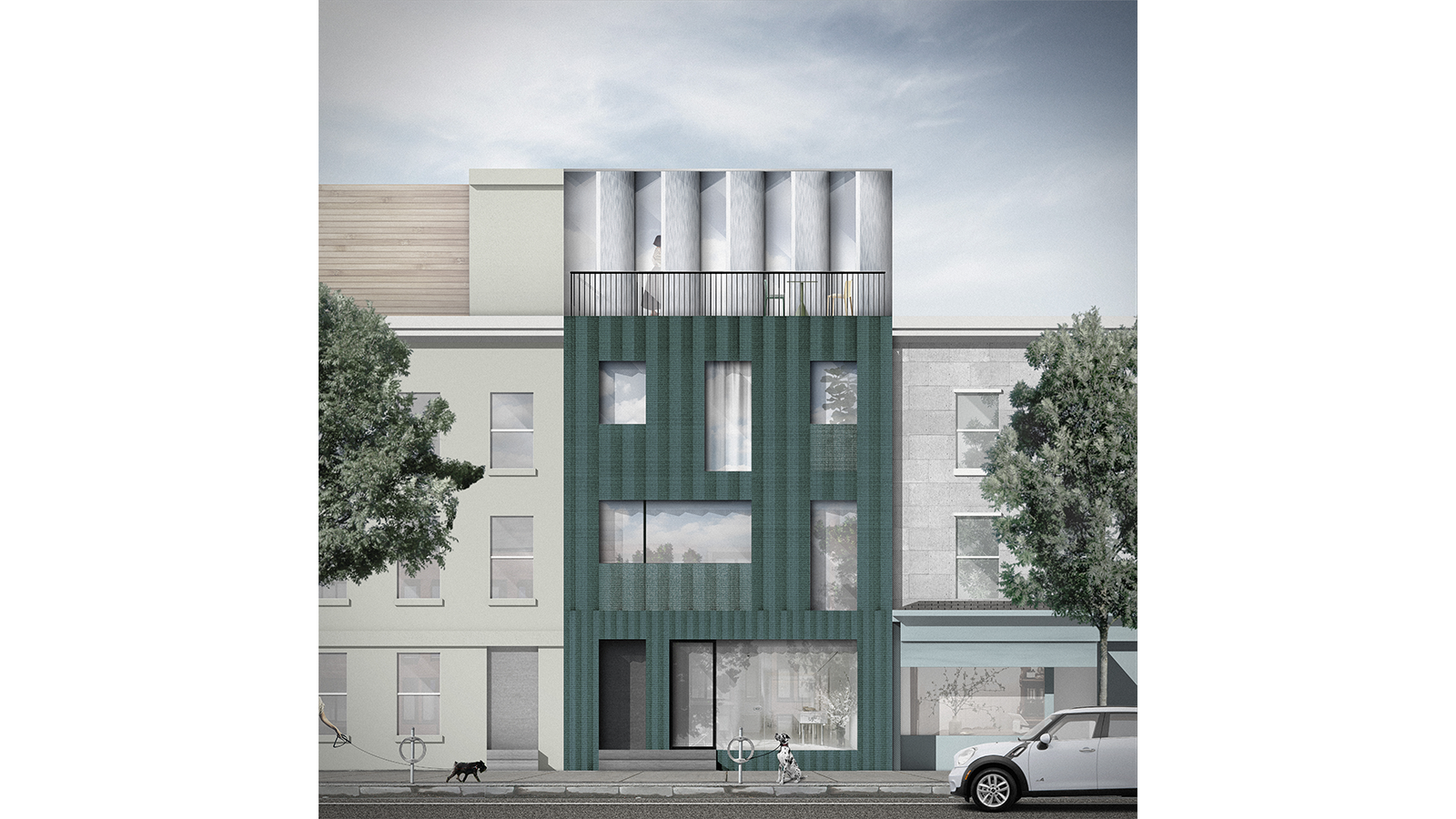
New York, New York, USA
2020, Ongoing
Client: Private
Team: Tei Carpenter, Marylynn Antaki, Ian Cheung
Crown House is a mixed use project that is organized with a vertical concealed thick wall that
incorporates a transformable millwork system that can be activated throughout the day and night. Its
exterior is designed with a perforated and pleated facade with reflective penthouse crown at the top which
dissolves into the sky. It is conceived through a series of “spatial clock” drawings that establish how the
residents (here, a working parent) spend time over the course of a day. In these drawings, time is tied to
space in a 24-hour clock to re-evaluate how the domestic sphere has fundamentally shifted during and after
the COVID-19 pandemic.
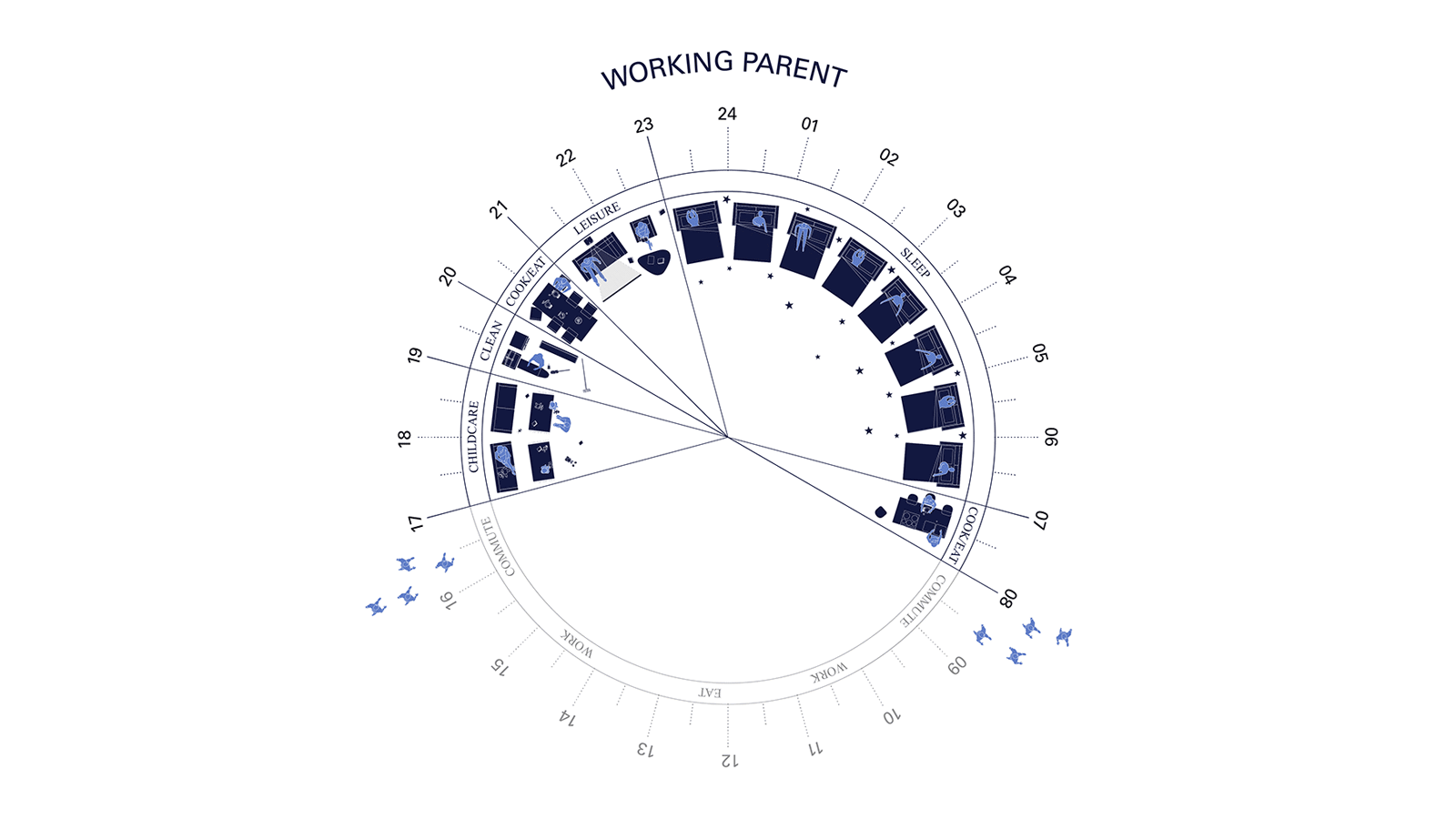
New York, New York, USA
2020, Ongoing
Client: Private
Team: Tei Carpenter, Marylynn Antaki, Ian Cheung
Crown House is a mixed use project that is organized with a vertical concealed thick wall that
incorporates a transformable millwork system that can be activated throughout the day and night. Its
exterior is designed with a perforated and pleated facade with reflective penthouse crown at the top which
dissolves into the sky. It is conceived through a series of “spatial clock” drawings that establish how the
residents (here, a working parent) spend time over the course of a day. In these drawings, time is tied to
space in a 24-hour clock to re-evaluate how the domestic sphere has fundamentally shifted during and after
the COVID-19 pandemic.
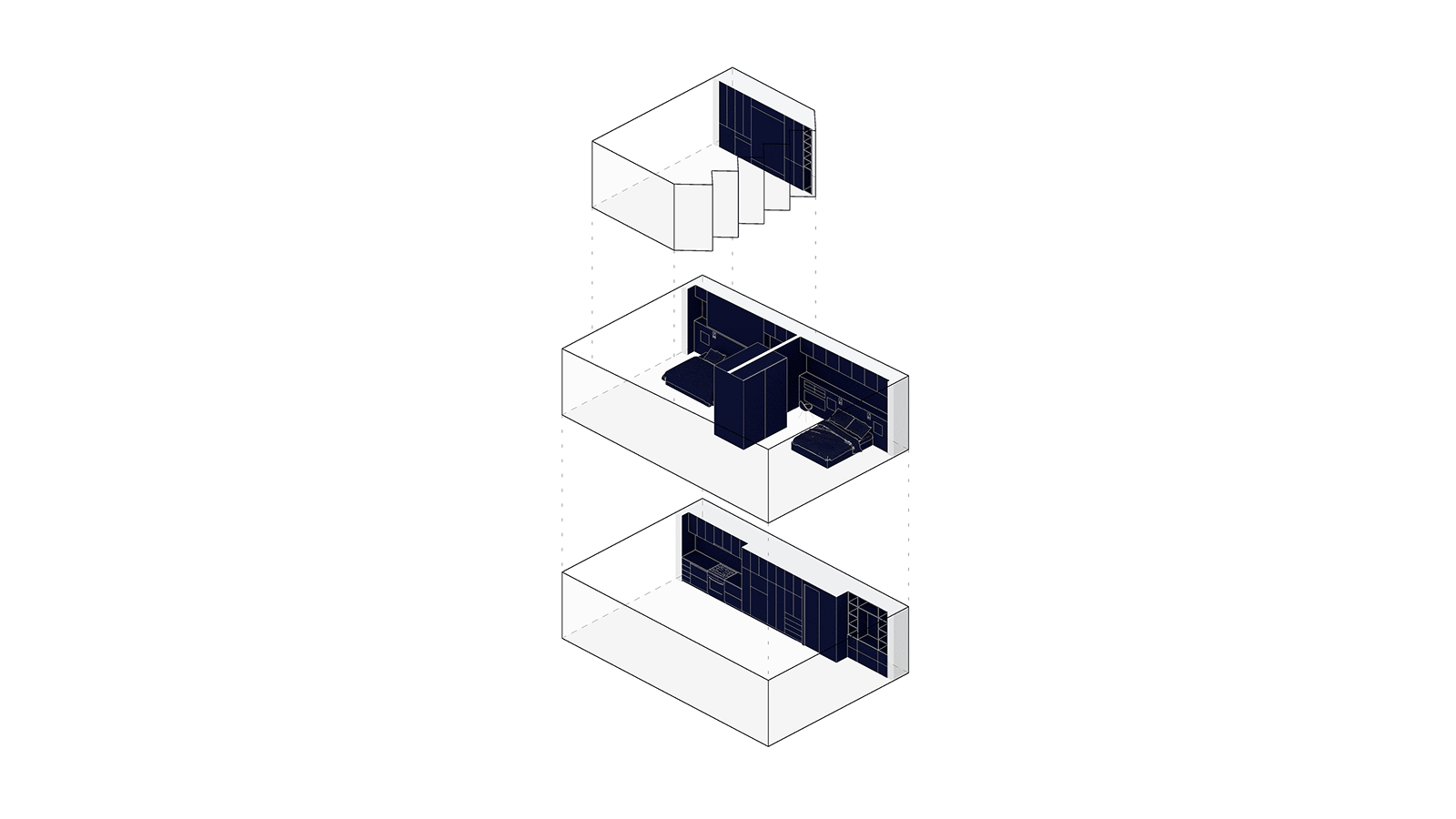
New York, New York, USA
2020, Ongoing
Client: Private
Team: Tei Carpenter, Marylynn Antaki, Ian Cheung
Crown House is a mixed use project that is organized with a vertical concealed thick wall that
incorporates a transformable millwork system that can be activated throughout the day and night. Its
exterior is designed with a perforated and pleated facade with reflective penthouse crown at the top which
dissolves into the sky. It is conceived through a series of “spatial clock” drawings that establish how the
residents (here, a working parent) spend time over the course of a day. In these drawings, time is tied to
space in a 24-hour clock to re-evaluate how the domestic sphere has fundamentally shifted during and after
the COVID-19 pandemic.

upstate new york addition and banya
show text
New York, USA
2020, In Progress
Client: Private
Team: Tei Carpenter, Marylynn Antaki, Ian Cheung, Tanya Maneeintr
An addition and banya with sauna and outdoor plunge pool designed to connect the residents directly to the
wilderness, working with existing topography and vernacular building elements. More information and
photographs coming soon.
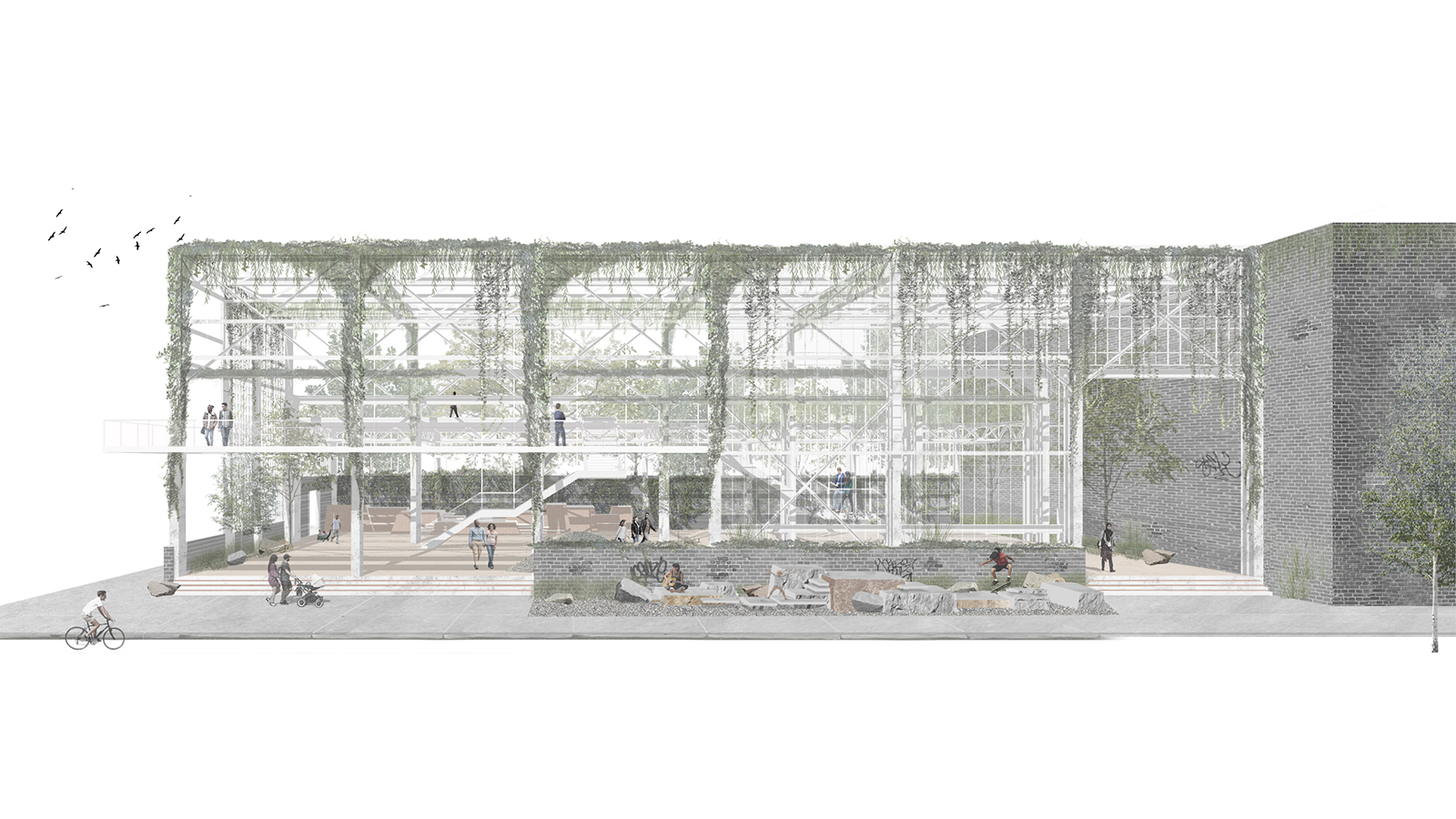
hamilton gears covered park
show text
Toronto, Canada
2020, Proposal
Team: Tei Carpenter, Jenna Gauder, Keenan Ngo
Hamilton Gears Covered Park intervenes in an existing vacant industrial building to propose a covered park
typology that revalues construction and demolition waste. Parts of the building are designed to be
intentionally subtracted and recycled while new elements are reclaimed regionally to offer new, public
consciousness to waste materials and offer a year round public space.
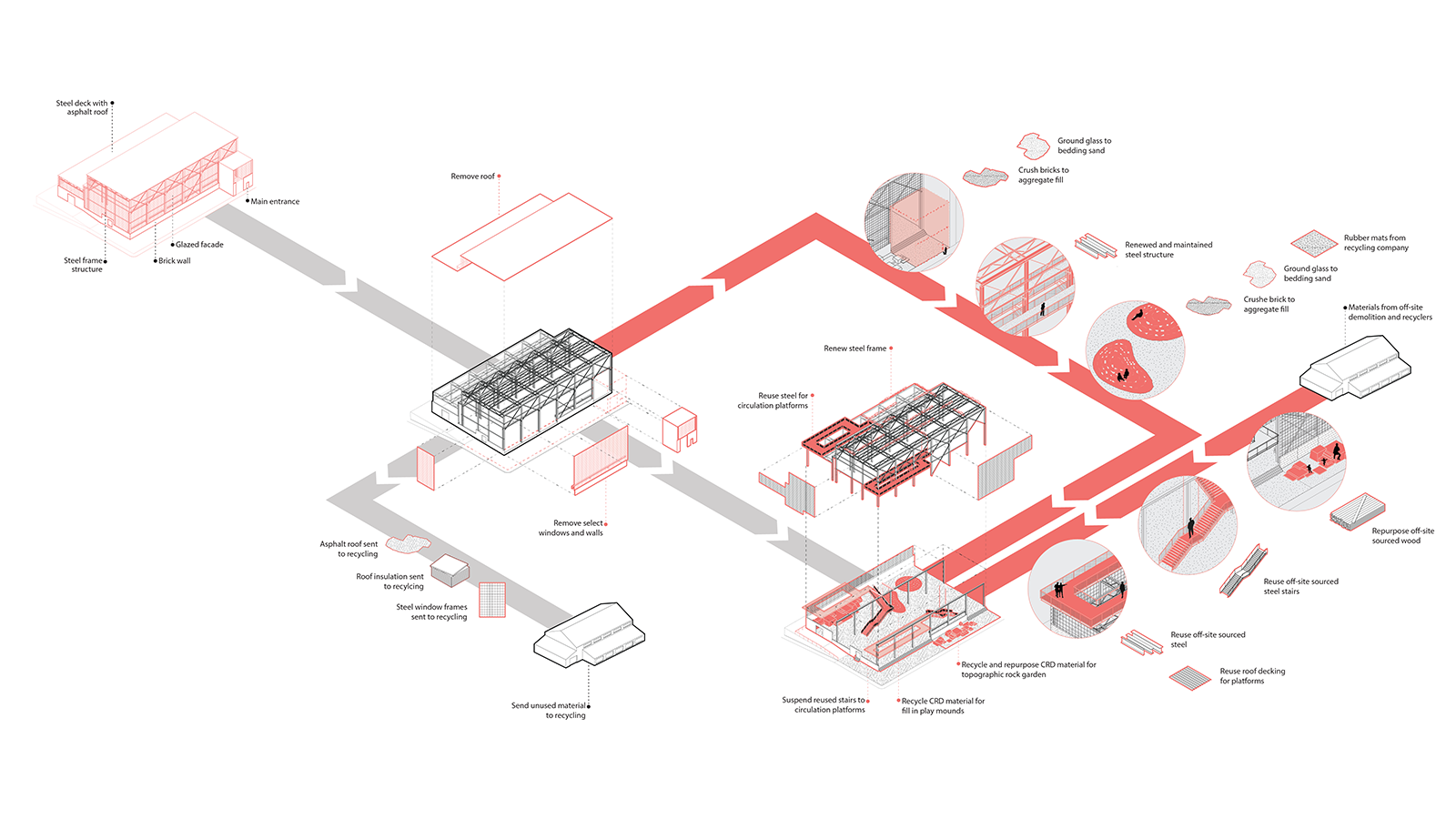
hamilton gears covered park
show text
Toronto, Canada
2020, Proposal
Team: Tei Carpenter, Jenna Gauder, Keenan Ngo
Hamilton Gears Covered Park intervenes in an existing vacant industrial building to propose a covered park
typology that revalues construction and demolition waste. Parts of the building are designed to be
intentionally subtracted and recycled while new elements are reclaimed regionally to offer new, public
consciousness to waste materials and offer a year round public space.
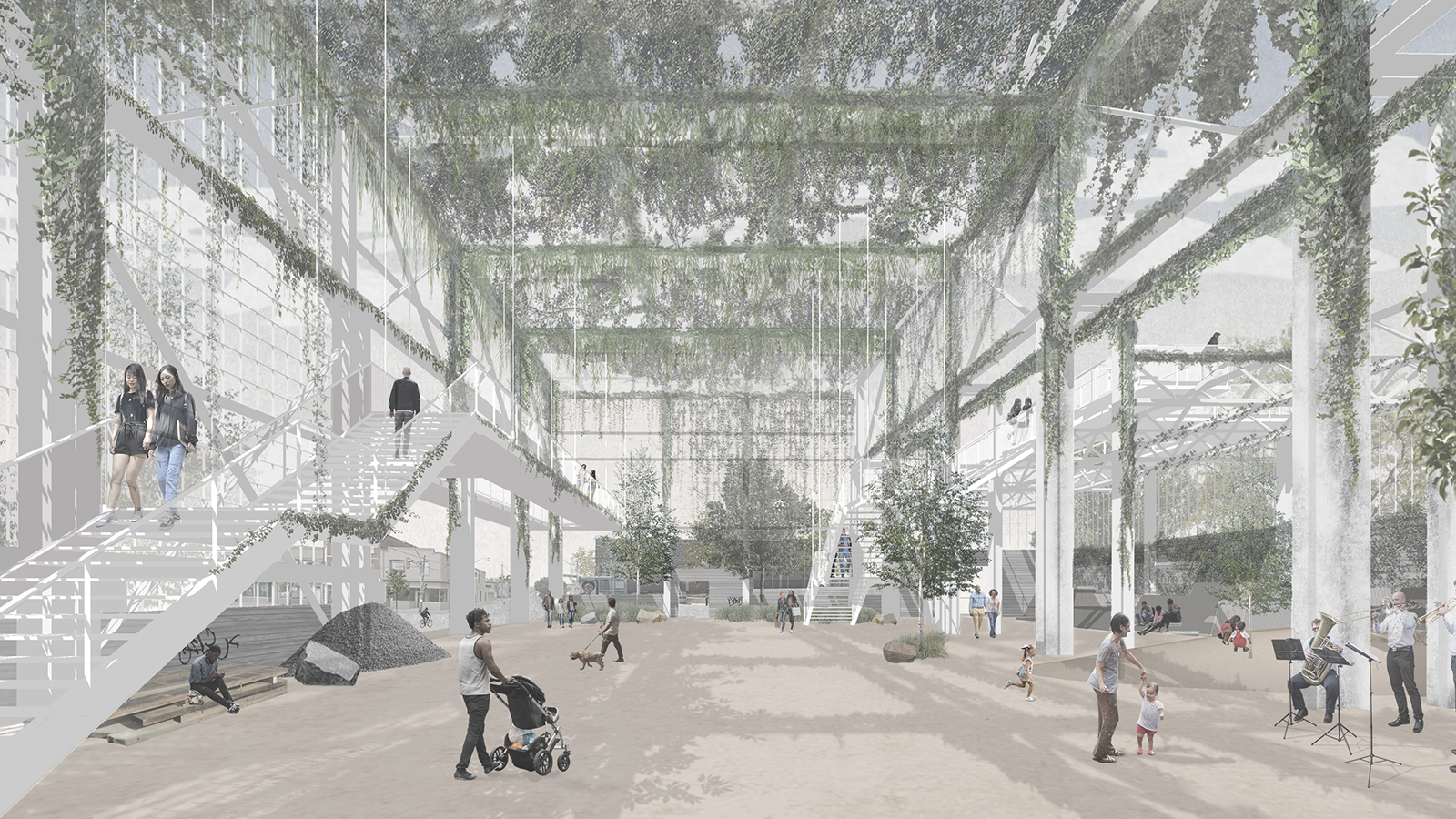
hamilton gears covered park
show text
Toronto, Canada
2020, Proposal
Team: Tei Carpenter, Jenna Gauder, Keenan Ngo
Hamilton Gears Covered Park intervenes in an existing vacant industrial building to propose a covered park
typology that revalues construction and demolition waste. Parts of the building are designed to be
intentionally subtracted and recycled while new elements are reclaimed regionally to offer new, public
consciousness to waste materials and offer a year round public space.
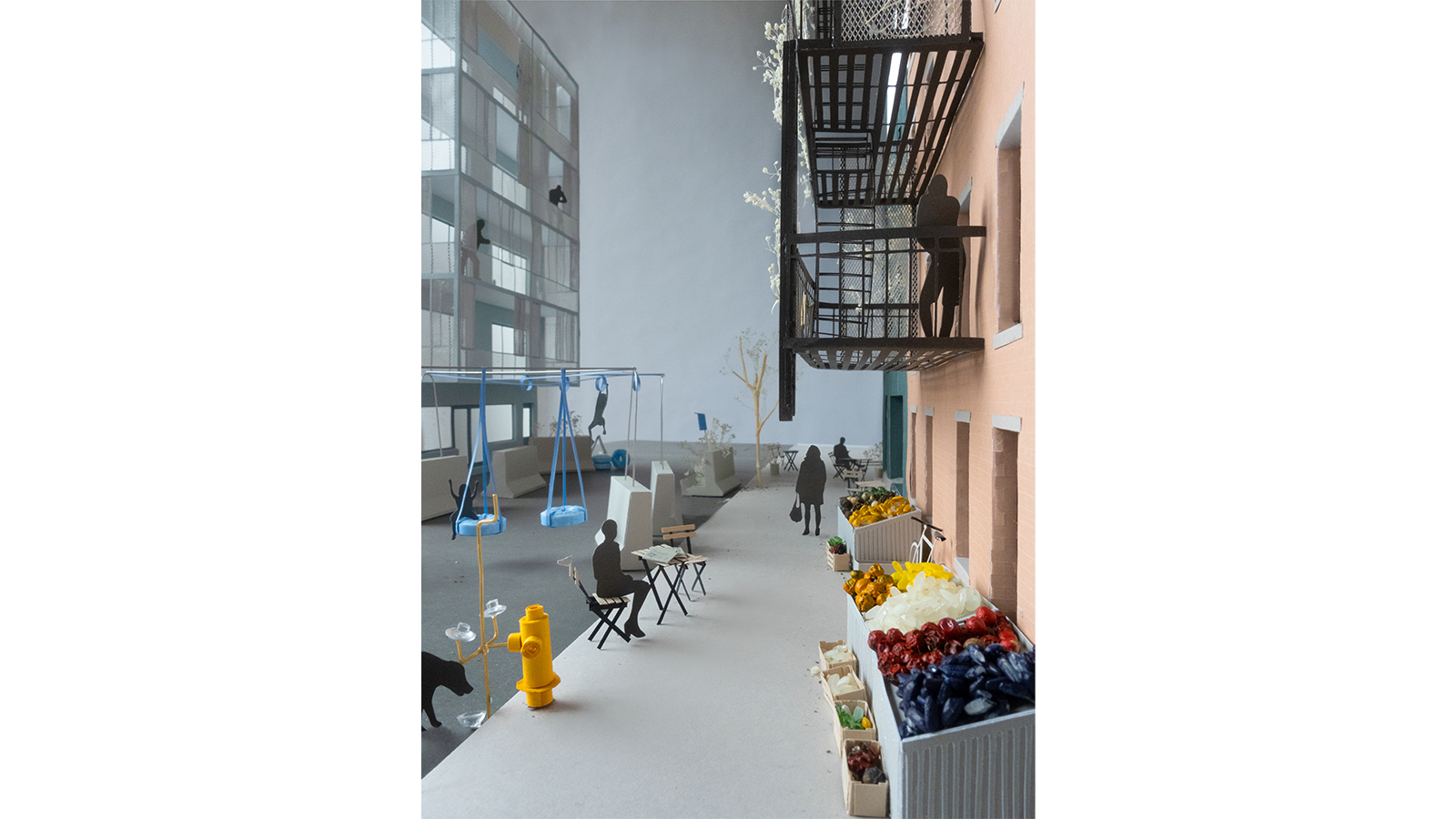
New York, New York, USA
2021, Digital Installation
Client: The Architectural League of New York
Team: Tei Carpenter, Ian Cheung, Erin Jeong, Erik Jinmatsu Roberson
Commissioned for the League Prize 2021 installation by the Architectural League of New York,
Street Remodel collects eight of the studio’s recent projects in order to explore and bring forth
latent potentials of everyday infrastructure and daily life to reimagine the civic capacity of the street.
It explores often-overlooked infrastructures as opportunities to imbue the street with pluralistic
capacities, not by building anew but rather by remodeling the familiar. The installation features New Public
Hydrant, Open Barriers, Crown House and Balcony Retrofits. For more information on the project check out the
website
here.
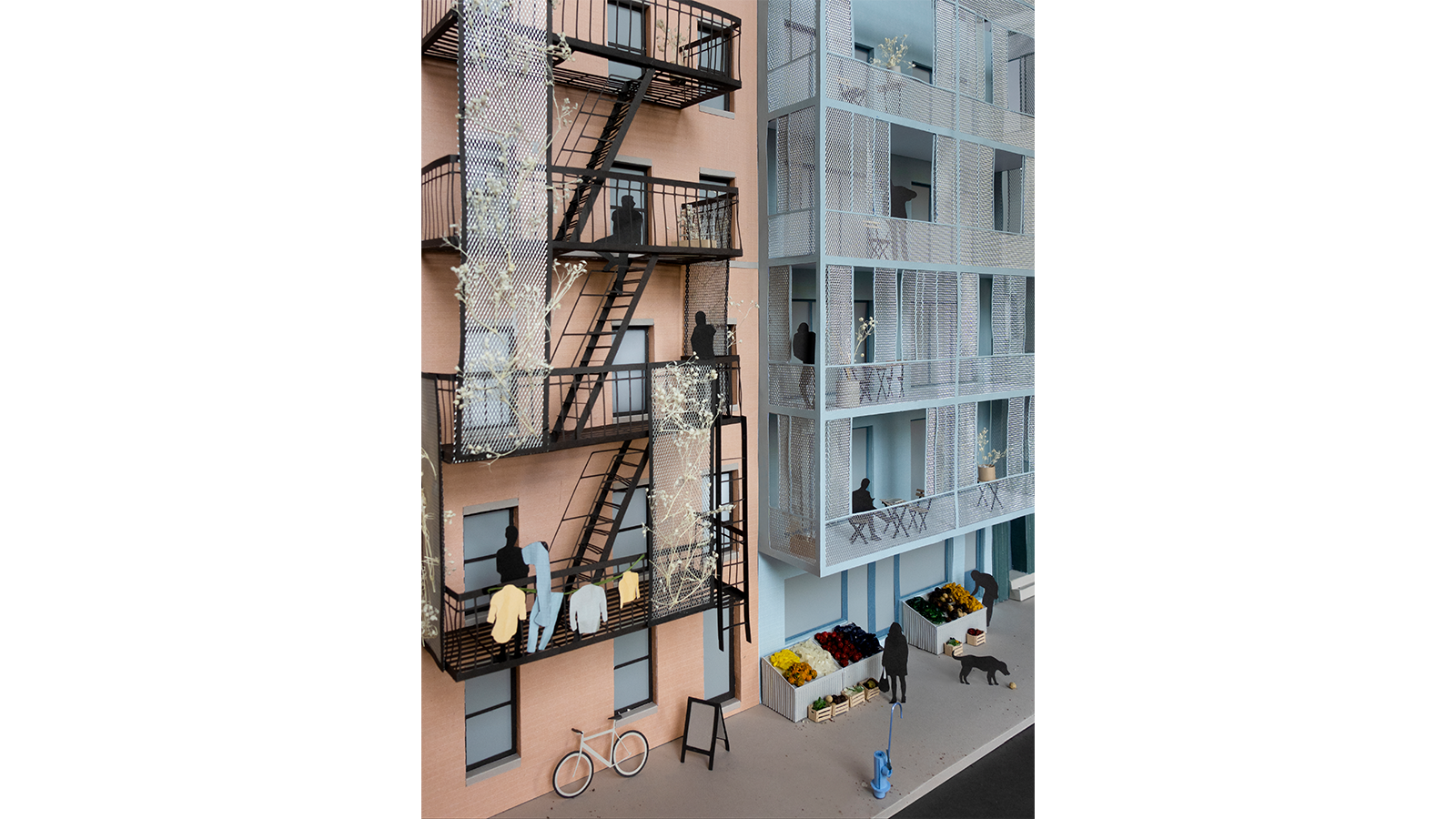
New York, New York, USA
2021, Digital Installation
Client: The Architectural League of New York
Team: Tei Carpenter, Ian Cheung, Erin Jeong, Erik Jinmatsu Roberson
Commissioned for the League Prize 2021 installation by the Architectural League of New York,
Street Remodel collects eight of the studio’s recent projects in order to explore and bring forth
latent potentials of everyday infrastructure and daily life to reimagine the civic capacity of the street.
It explores often-overlooked infrastructures as opportunities to imbue the street with pluralistic
capacities, not by building anew but rather by remodeling the familiar. The installation features New Public
Hydrant, Open Barriers, Crown House and Balcony Retrofits. For more information on the project check out the
website
here.
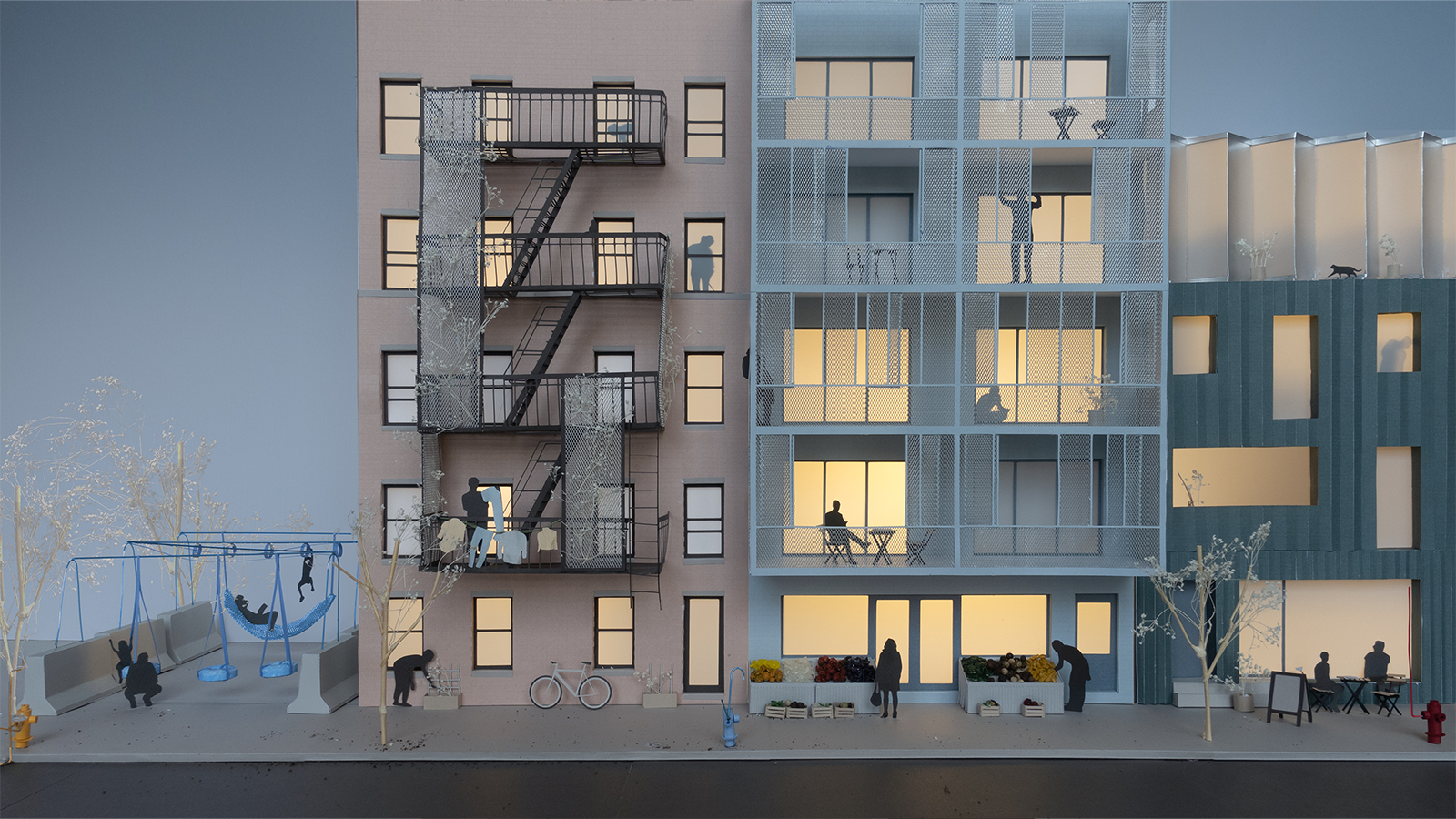
New York, New York, USA
2021, Digital Installation
Client: The Architectural League of New York
Team: Tei Carpenter, Ian Cheung, Erin Jeong, Erik Jinmatsu Roberson
Commissioned for the League Prize 2021 installation by the Architectural League of New York,
Street Remodel collects eight of the studio’s recent projects in order to explore and bring forth
latent potentials of everyday infrastructure and daily life to reimagine the civic capacity of the street.
It explores often-overlooked infrastructures as opportunities to imbue the street with pluralistic
capacities, not by building anew but rather by remodeling the familiar. The installation features New Public
Hydrant, Open Barriers, Crown House and Balcony Retrofits. For more information on the project check out the
website
here.
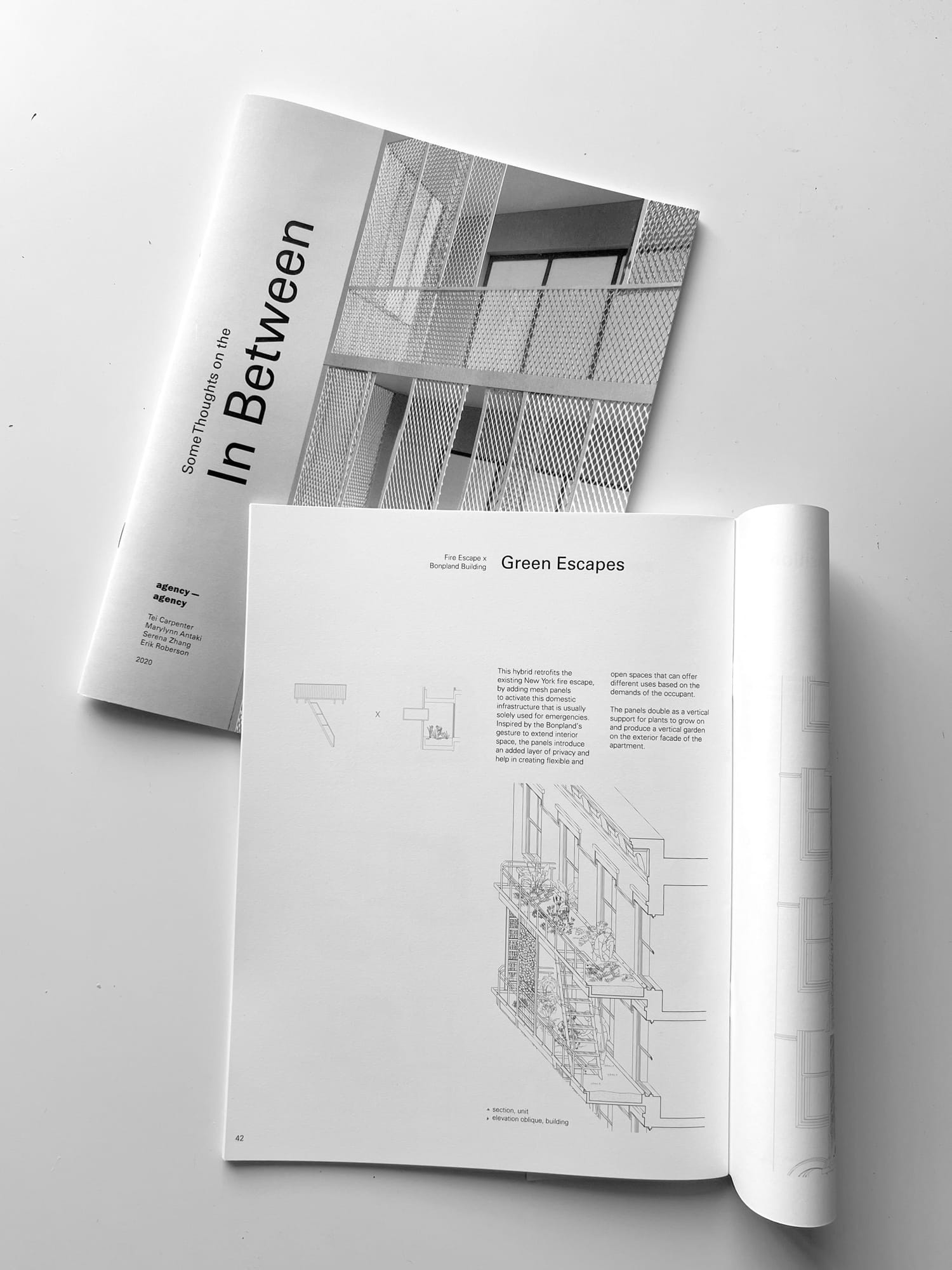
balcony retrofits
show text
New York, New York, USA
2020, research
Team: Tei Carpenter, Marylynn Antaki, Erik Jinmatsu Roberson, Serena Zhang
Balcony Retrofits is an ongoing research project into the space in between the building exterior and
the street. It reflects on the New York State Tenement House Act when fire escapes were retrofitted onto
buildings due to poor ventilation to consider new ways to democratically provide outdoor space to more
people. “Green Escapes” is a series of mesh panels that produce a layer of privacy for prolonged occupation
and a support for a vertical garden across the building facade. “Operable Thresholds” are building retrofits
that offer operable panels for user customization of ventilation, privacy and sun infiltration.

balcony retrofits
show text
New York, New York, USA
2020, research
Team: Tei Carpenter, Marylynn Antaki, Erik Jinmatsu Roberson, Serena Zhang
Balcony Retrofits is an ongoing research project into the space in between the building exterior and
the street. It reflects on the New York State Tenement House Act when fire escapes were retrofitted onto
buildings due to poor ventilation to consider new ways to democratically provide outdoor space to more
people. “Green Escapes” is a series of mesh panels that produce a layer of privacy for prolonged occupation
and a support for a vertical garden across the building facade. “Operable Thresholds” are building retrofits
that offer operable panels for user customization of ventilation, privacy and sun infiltration.

balcony retrofits
show text
New York, New York, USA
2020, research
Team: Tei Carpenter, Marylynn Antaki, Erik Jinmatsu Roberson, Serena Zhang
Balcony Retrofits is an ongoing research project into the space in between the building exterior and
the street. It reflects on the New York State Tenement House Act when fire escapes were retrofitted onto
buildings due to poor ventilation to consider new ways to democratically provide outdoor space to more
people. “Green Escapes” is a series of mesh panels that produce a layer of privacy for prolonged occupation
and a support for a vertical garden across the building facade. “Operable Thresholds” are building retrofits
that offer operable panels for user customization of ventilation, privacy and sun infiltration.

intentional estates agency
show text
2018, Oslo Architecture Triennale, "Enough: The Architecture of Degrowth"
Client: Oslo Architecture Triennale
Team: Tei Carpenter, Jesse LeCavalier, Julia Pyszkowski, Dan Taeyoung, Chris Woebken
Graphic Design: David Knowles and Willis Kingery
The Intentional Estates Agency [IEA] adopts and modifies the mechanisms of desire and commodity logic
of a real estate agency to engage issues of degrowth. Designed as an interactive questionnaire, the brochure
prompts participants to discover a portfolio of degrowth options that draw from a range of global
historical, contemporary and speculative social experiments. These portfolios foreground communal metrics,
platforms for collective sharing, and resource management. The IEA supports the need to locate alternative
pathways out of a paradigm of limitless growth and expand an empirical understanding of how design can
support new forms of society and value systems. It is available at
Printed Matter.
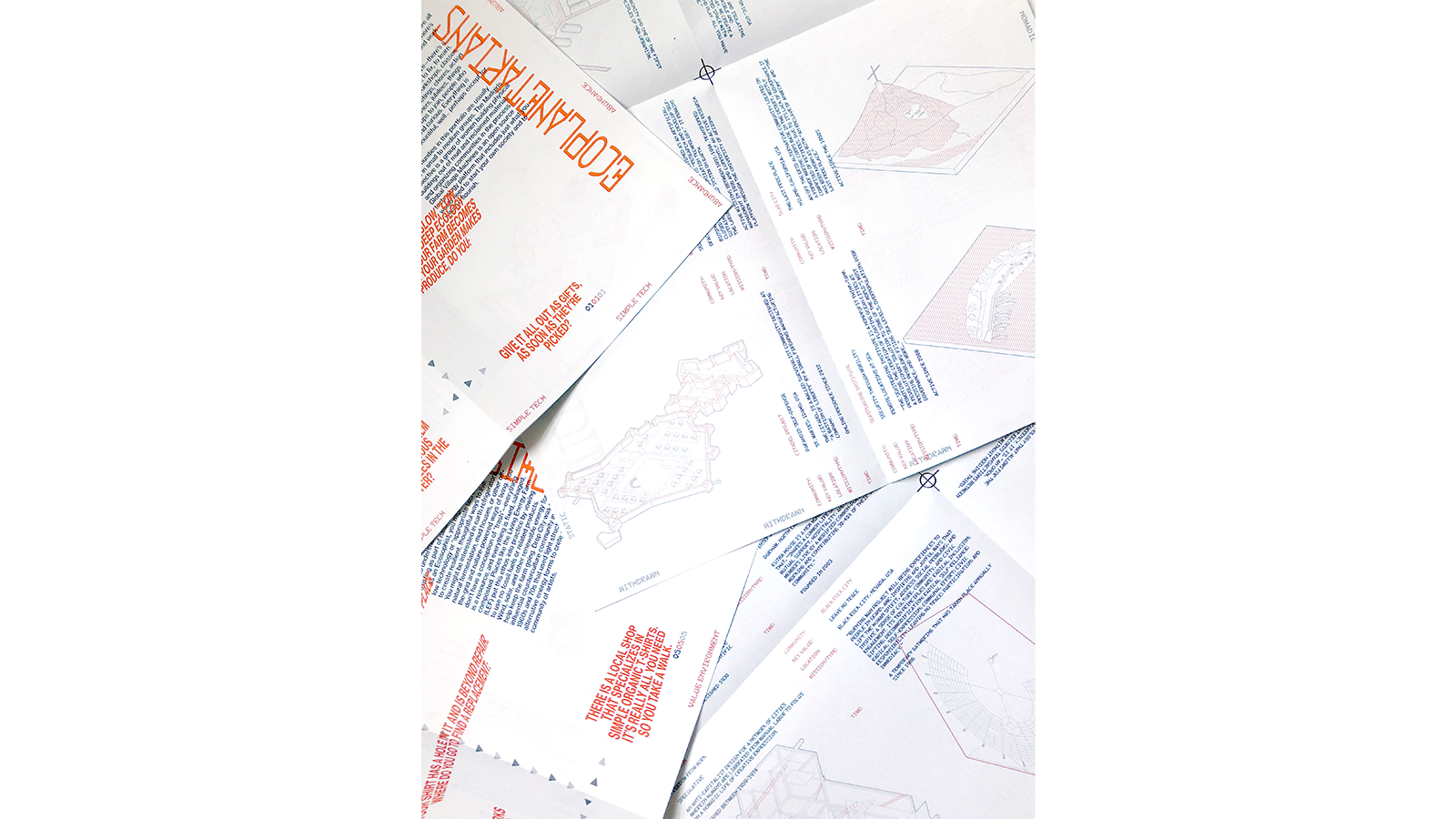
intentional estates agency
show text
2018, Oslo Architecture Triennale, "Enough: The Architecture of Degrowth"
Client: Oslo Architecture Triennale
Team: Tei Carpenter, Jesse LeCavalier, Julia Pyszkowski, Dan Taeyoung, Chris Woebken
Graphic Design: David Knowles and Willis Kingery
The Intentional Estates Agency [IEA] adopts and modifies the mechanisms of desire and commodity logic
of a real estate agency to engage issues of degrowth. Designed as an interactive questionnaire, the brochure
prompts participants to discover a portfolio of degrowth options that draw from a range of global
historical, contemporary and speculative social experiments. These portfolios foreground communal metrics,
platforms for collective sharing, and resource management. The IEA supports the need to locate alternative
pathways out of a paradigm of limitless growth and expand an empirical understanding of how design can
support new forms of society and value systems. It is available at
Printed Matter.
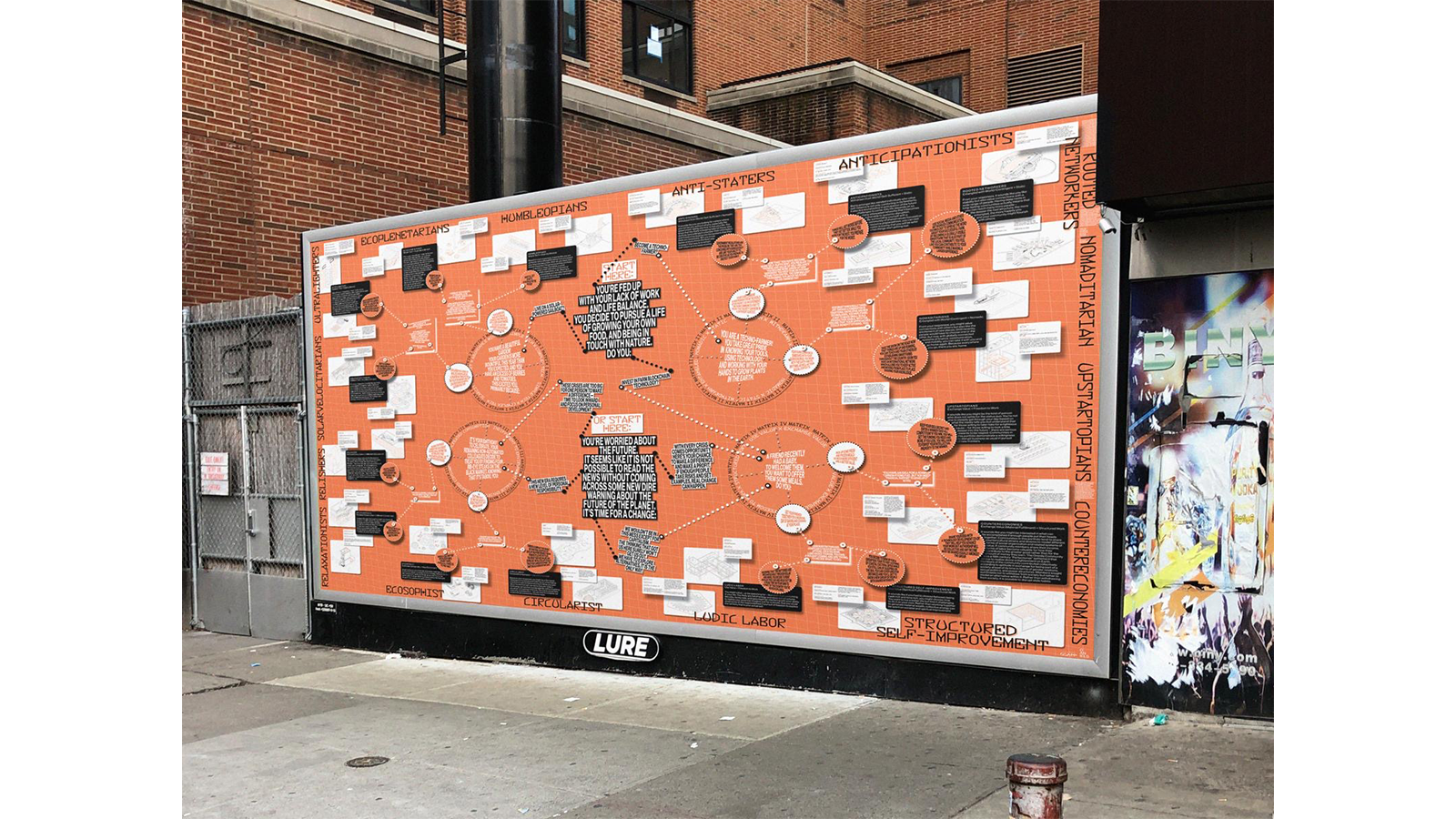
intentional estates agency
show text
2018, Oslo Architecture Triennale, "Enough: The Architecture of Degrowth"
Client: Oslo Architecture Triennale
Team: Tei Carpenter, Jesse LeCavalier, Julia Pyszkowski, Dan Taeyoung, Chris Woebken
Graphic Design: David Knowles and Willis Kingery
The Intentional Estates Agency [IEA] adopts and modifies the mechanisms of desire and commodity logic
of a real estate agency to engage issues of degrowth. Designed as an interactive questionnaire, the brochure
prompts participants to discover a portfolio of degrowth options that draw from a range of global
historical, contemporary and speculative social experiments. These portfolios foreground communal metrics,
platforms for collective sharing, and resource management. The IEA supports the need to locate alternative
pathways out of a paradigm of limitless growth and expand an empirical understanding of how design can
support new forms of society and value systems. It is available at
Printed Matter.
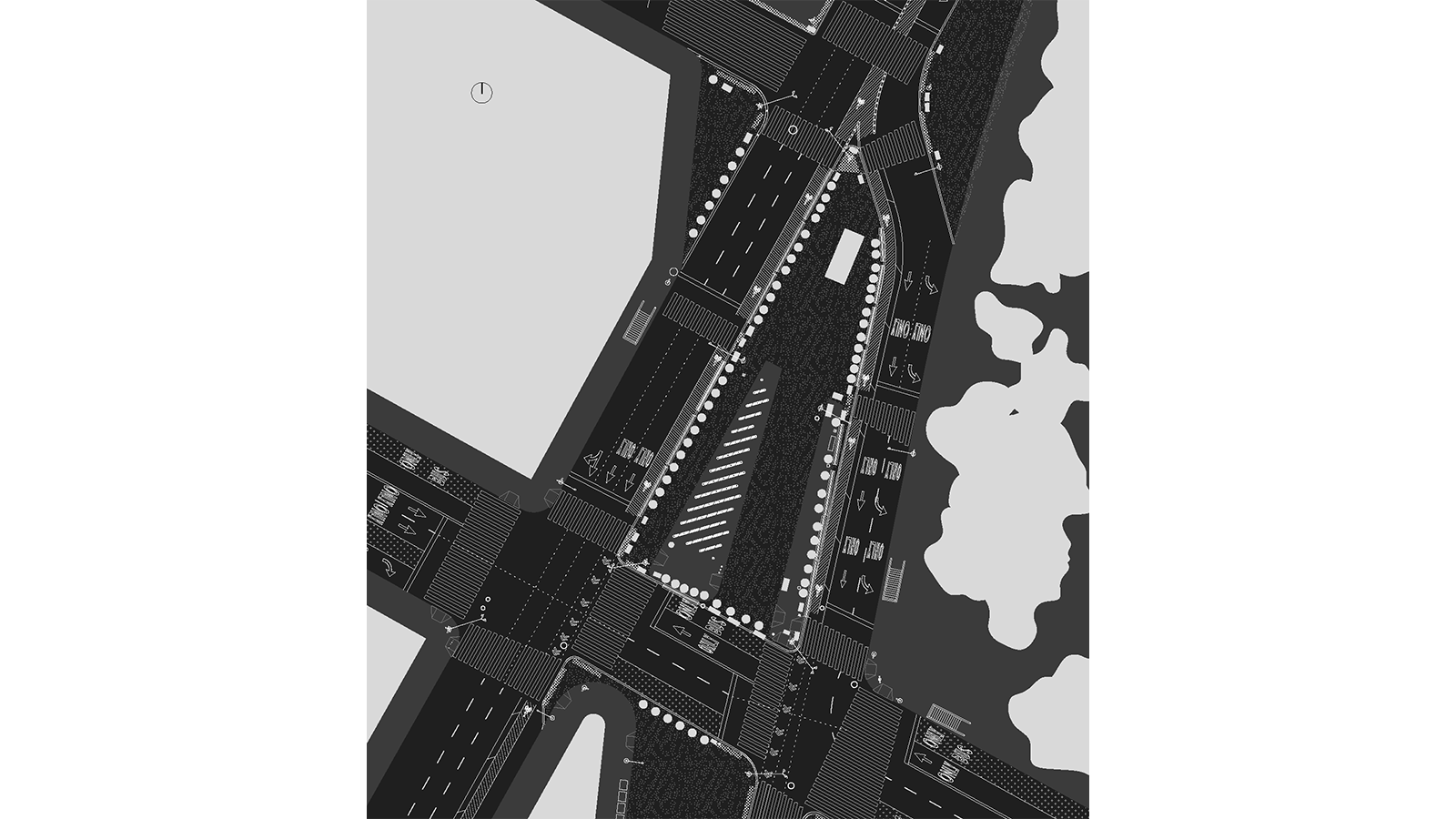
flatiron crossings
show text
New York, New York, USA
2018, Competition Finalist
Client: Van Alen Institute and Flatiron/23rd Street Partnership
Team: Tei Carpenter, Arianna Deane, Minjae Kim, Ashely Kuo
A finalist for a holiday installation in Manhattan’s Madison Square Park, Flatiron Crossings re-forms
New York City’s language of small-scale traffic management infrastructure—crosswalks, delineators, speed
bumps, and channelizers—to create an immersive, animated and luminous field that encourages congestion and
public interaction. As a literal “crossing” that engages the public as a space of rest, discovery and
interaction, the project takes a cue from the site’s iconic intersection of Fifth Avenue and Broadway. A
grid of internally illuminated, gently flexing poles are finished with retroreflective paint to produce a
glowing, glittering experience with the interplay of people, headlights and phone flashes.
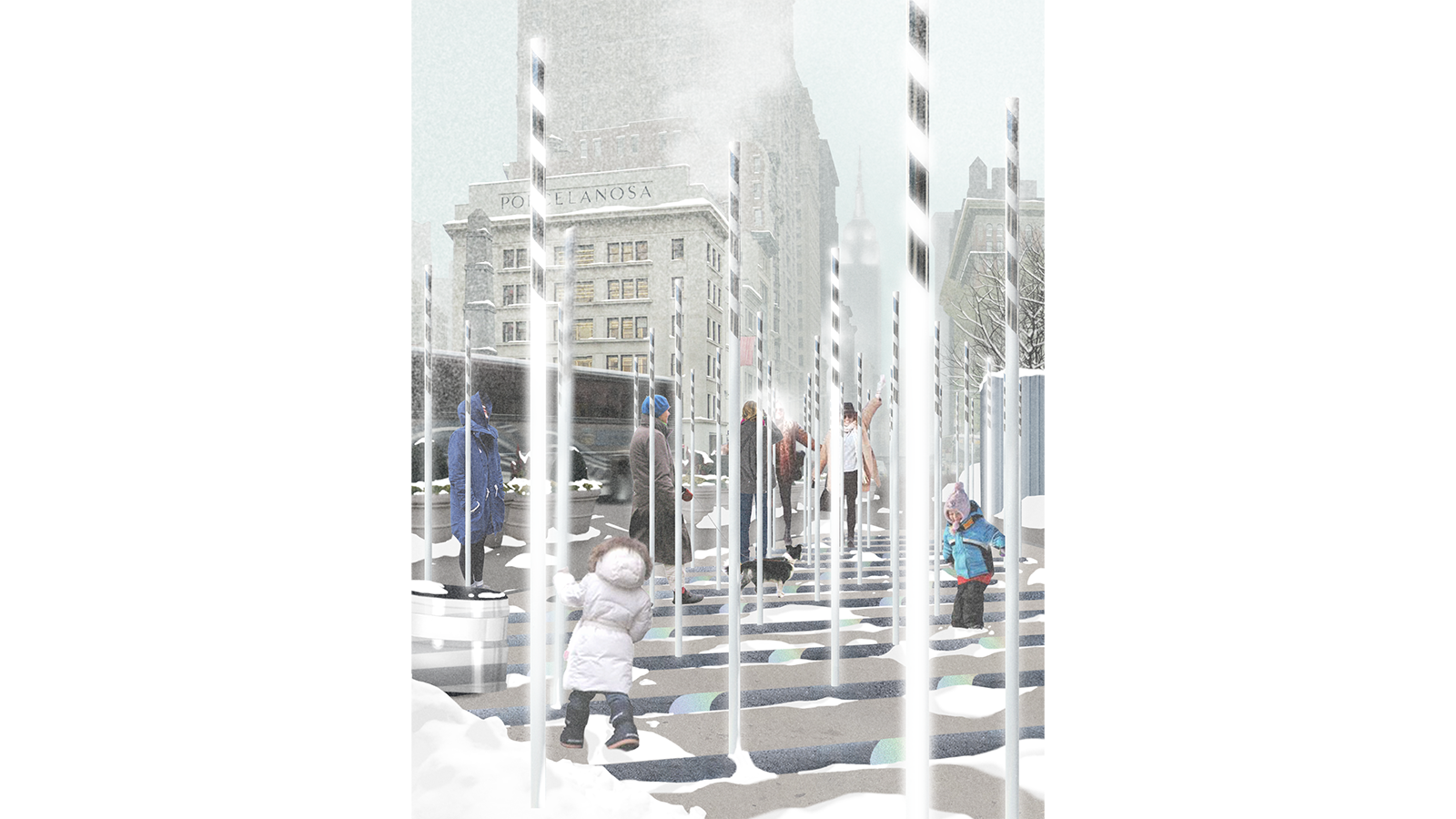
flatiron crossings
show text
New York, New York, USA
2018, Competition Finalist
Client: Van Alen Institute and Flatiron/23rd Street Partnership
Team: Tei Carpenter, Arianna Deane, Minjae Kim, Ashely Kuo
A finalist for a holiday installation in Manhattan’s Madison Square Park, Flatiron Crossings re-forms
New York City’s language of small-scale traffic management infrastructure—crosswalks, delineators, speed
bumps, and channelizers—to create an immersive, animated and luminous field that encourages congestion and
public interaction. As a literal “crossing” that engages the public as a space of rest, discovery and
interaction, the project takes a cue from the site’s iconic intersection of Fifth Avenue and Broadway. A
grid of internally illuminated, gently flexing poles are finished with retroreflective paint to produce a
glowing, glittering experience with the interplay of people, headlights and phone flashes.
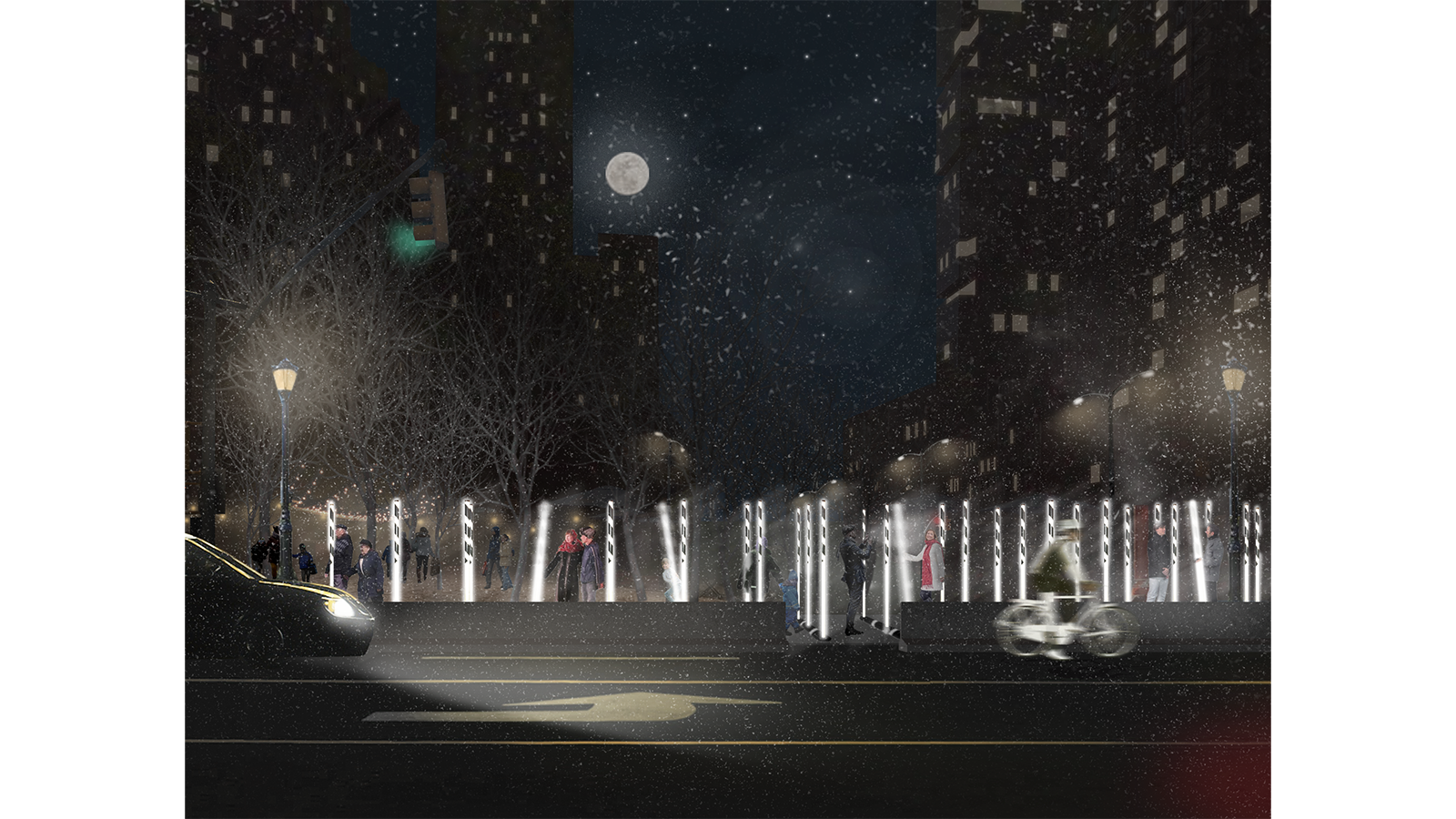
flatiron crossings
show text
New York, New York, USA
2018, Competition Finalist
Client: Van Alen Institute and Flatiron/23rd Street Partnership
Team: Tei Carpenter, Arianna Deane, Minjae Kim, Ashely Kuo
A finalist for a holiday installation in Manhattan’s Madison Square Park, Flatiron Crossings re-forms
New York City’s language of small-scale traffic management infrastructure—crosswalks, delineators, speed
bumps, and channelizers—to create an immersive, animated and luminous field that encourages congestion and
public interaction. As a literal “crossing” that engages the public as a space of rest, discovery and
interaction, the project takes a cue from the site’s iconic intersection of Fifth Avenue and Broadway. A
grid of internally illuminated, gently flexing poles are finished with retroreflective paint to produce a
glowing, glittering experience with the interplay of people, headlights and phone flashes.




.jpg)

.jpg)





































